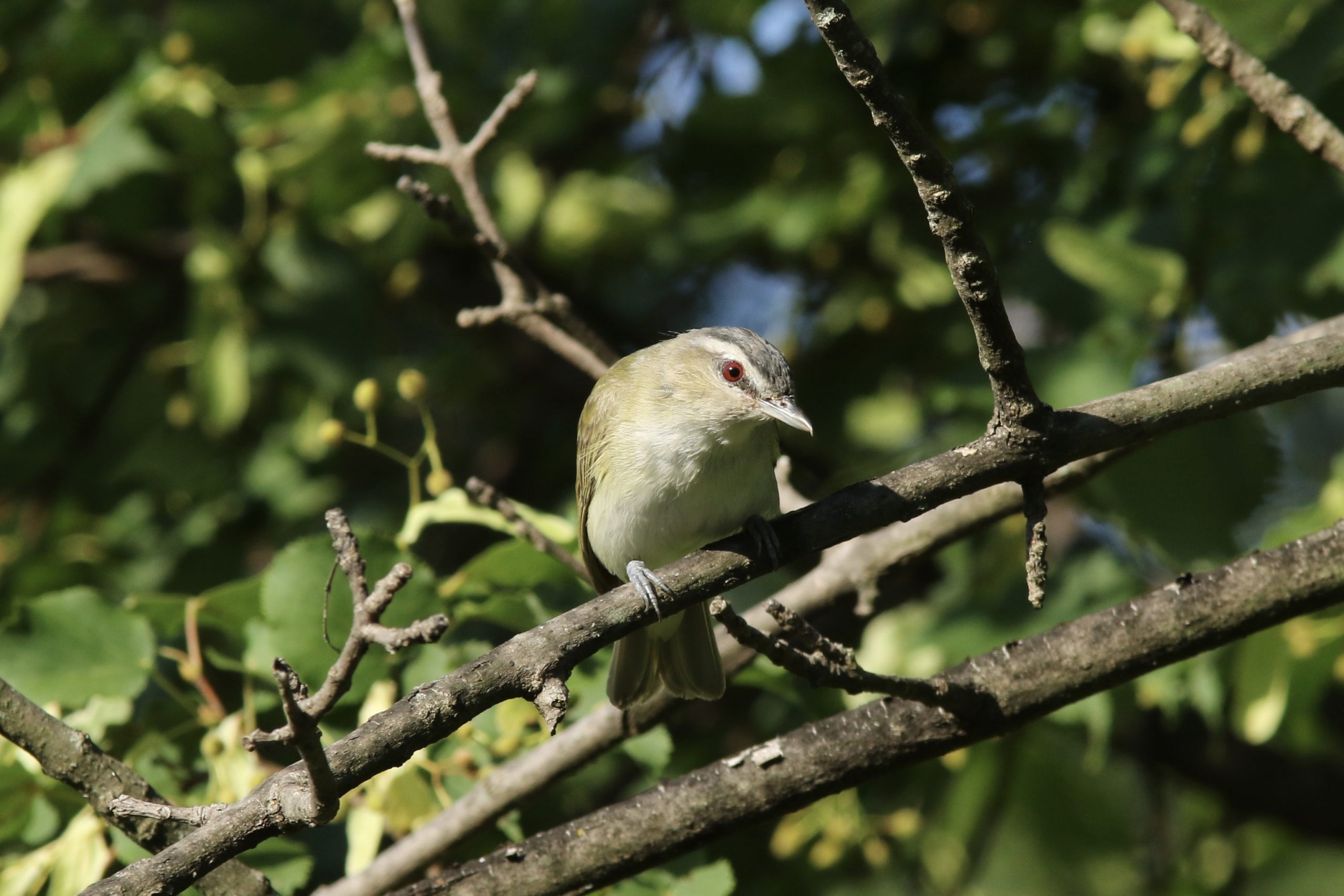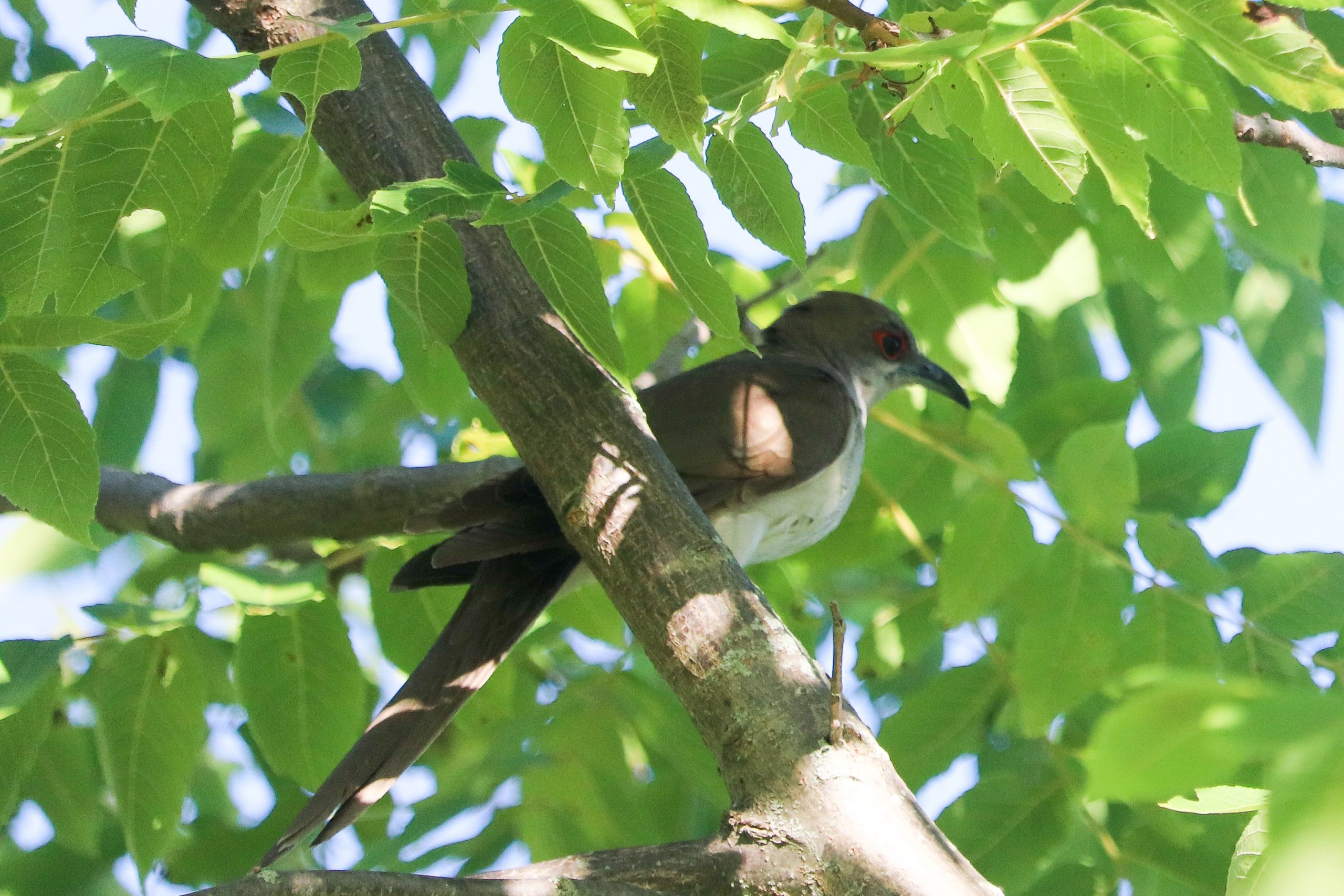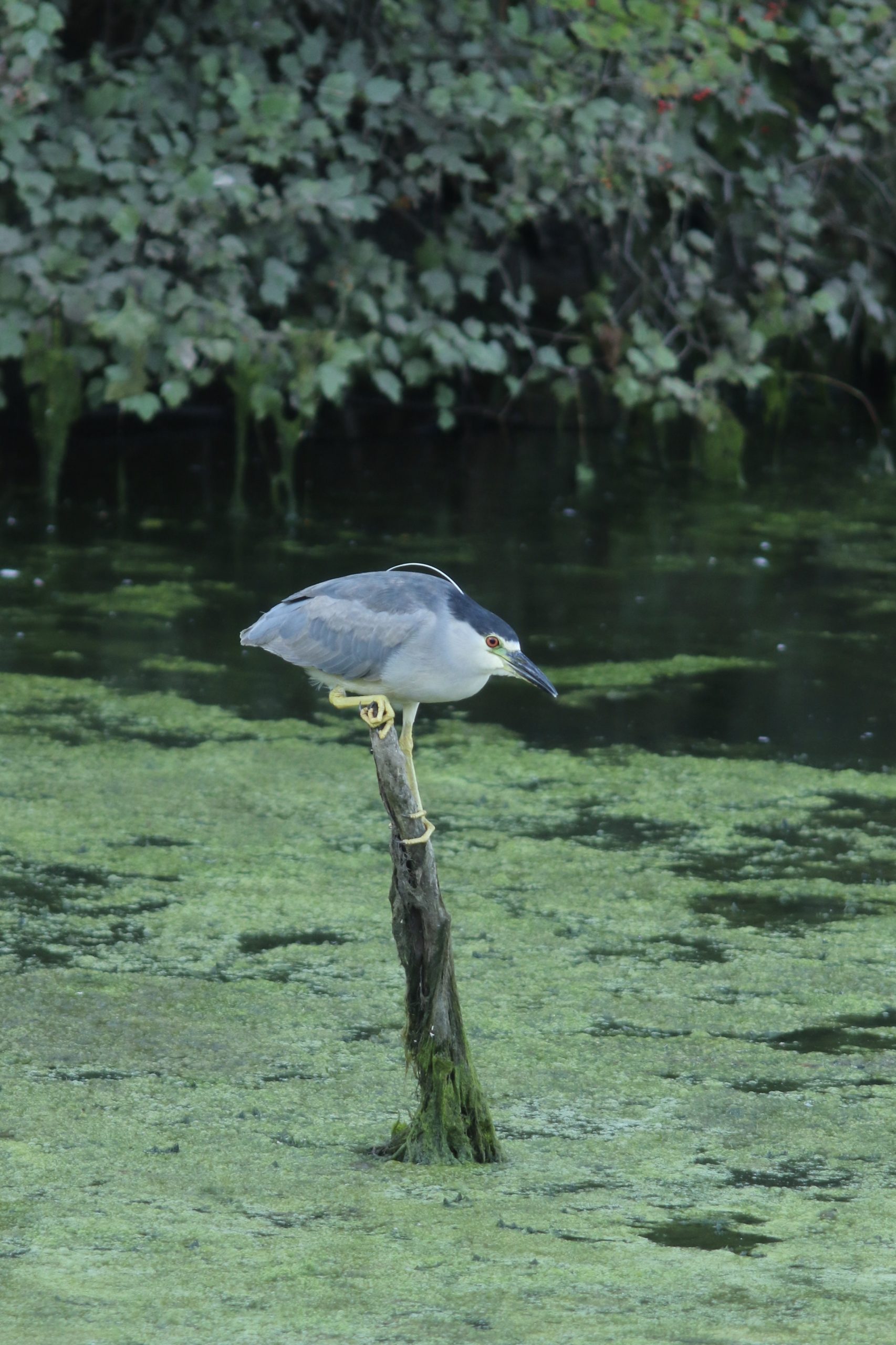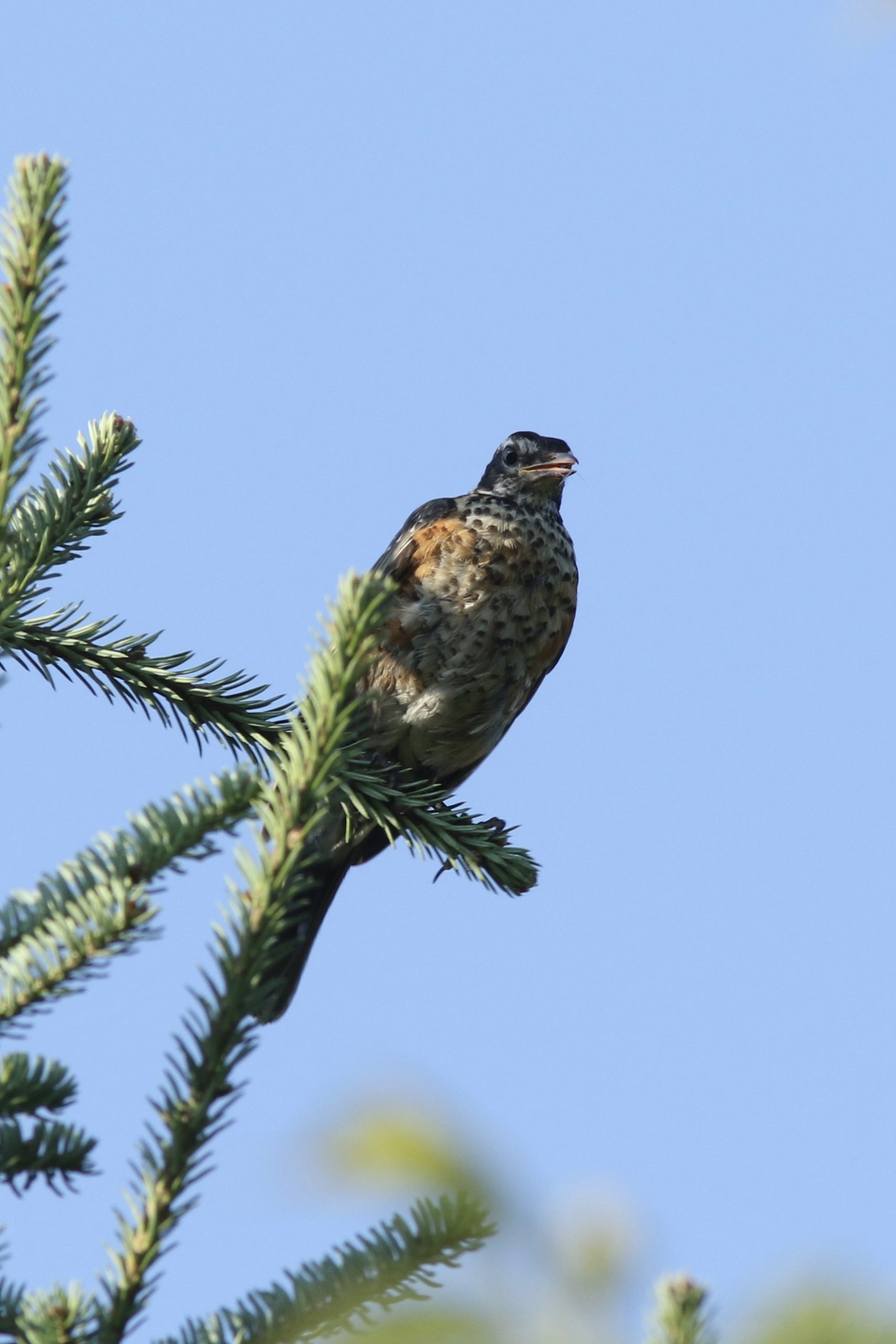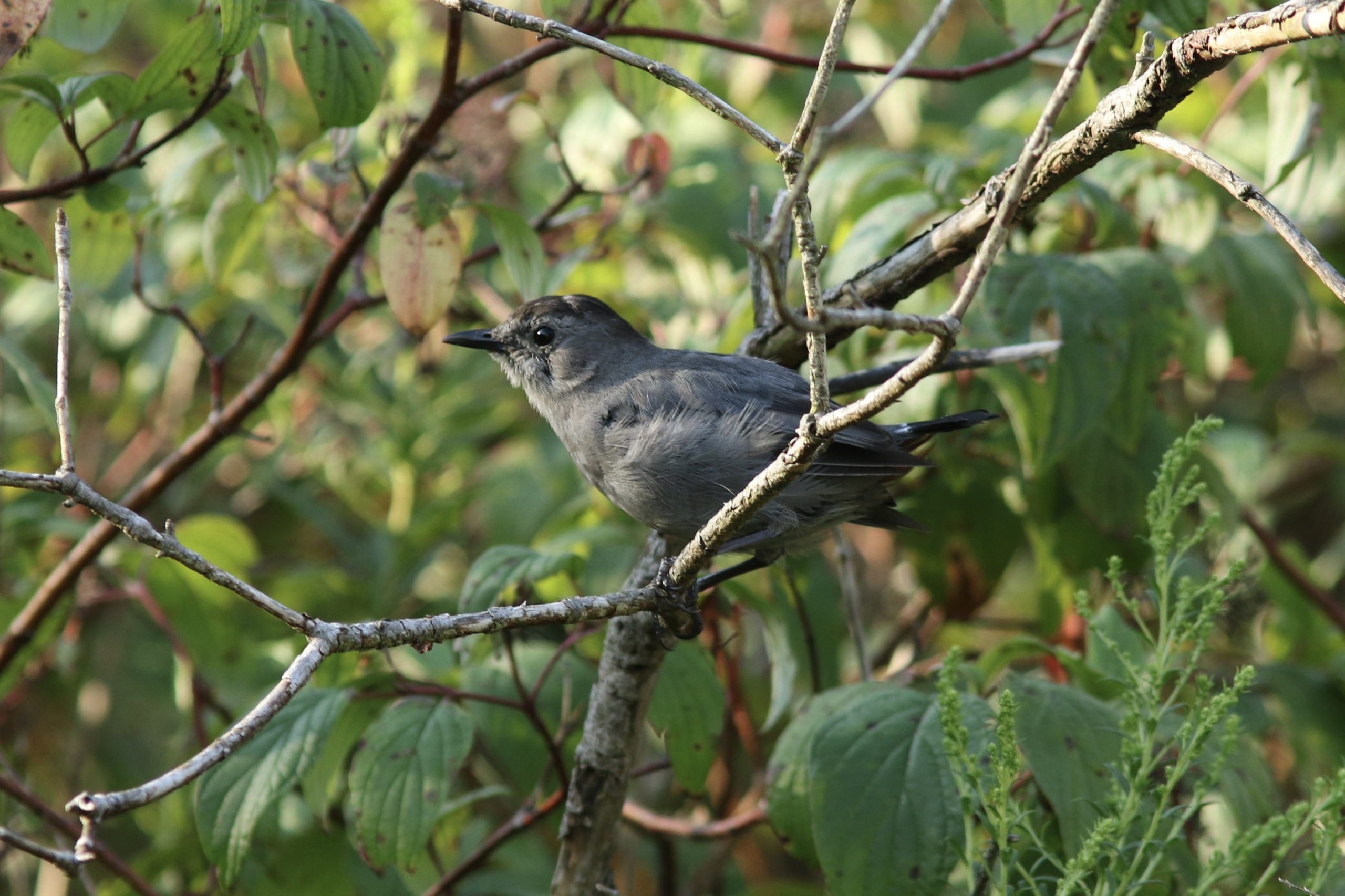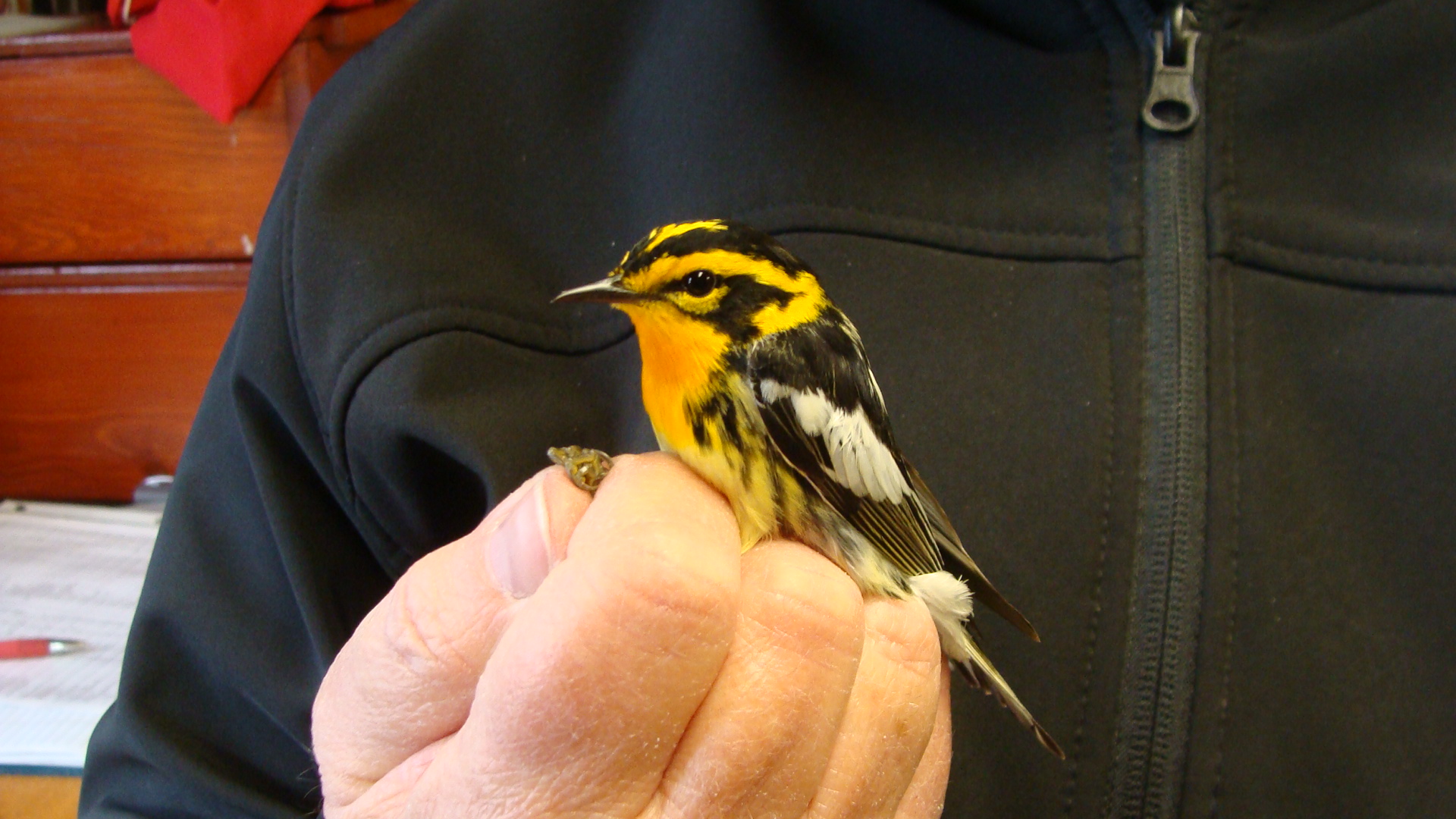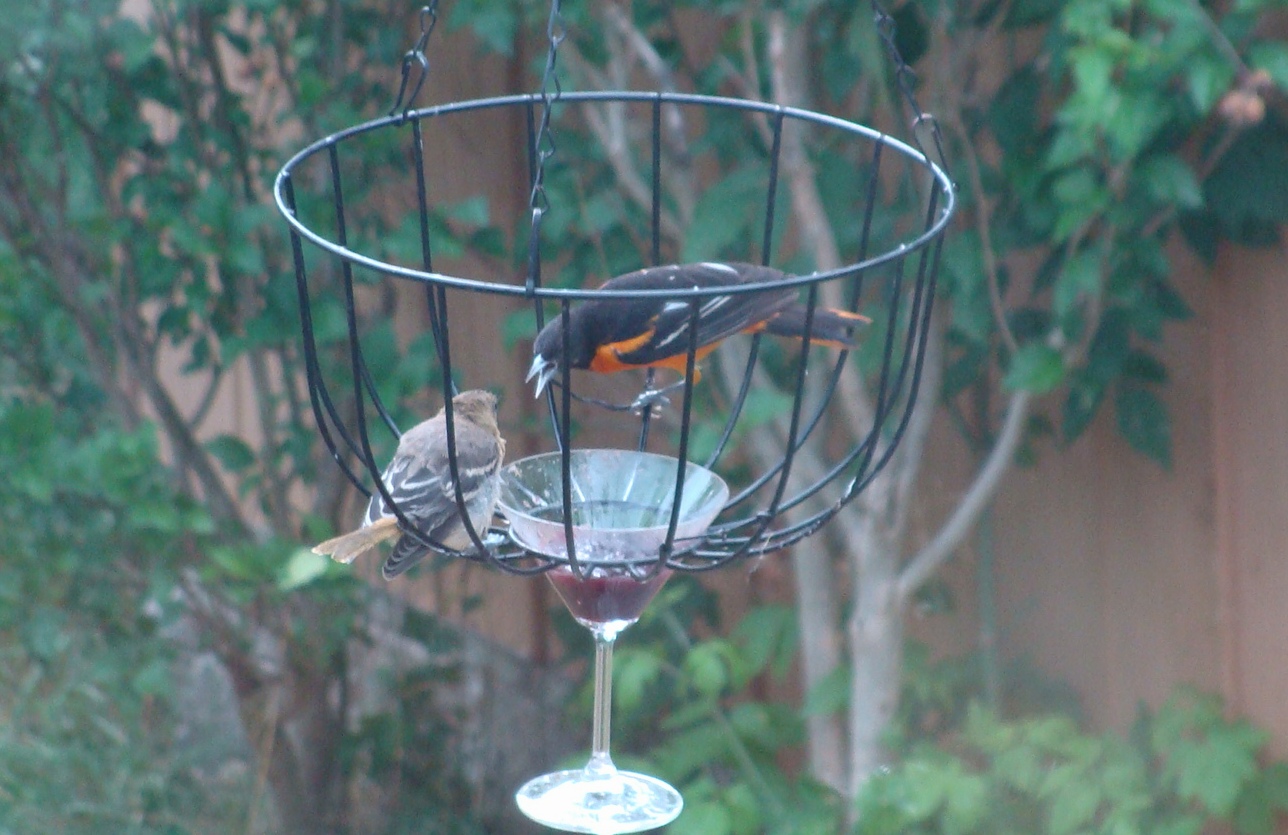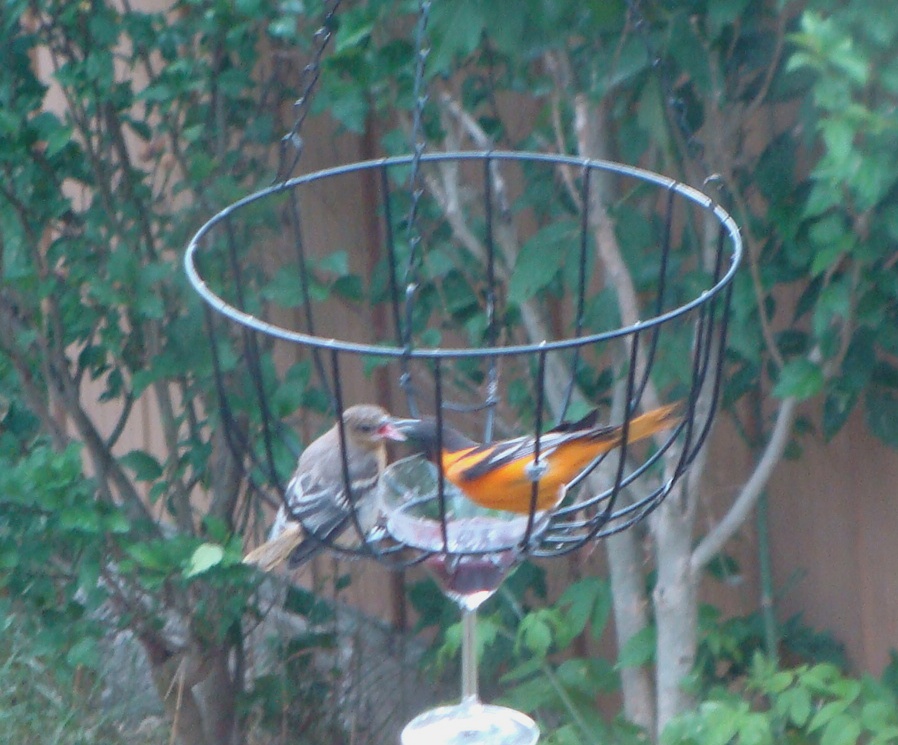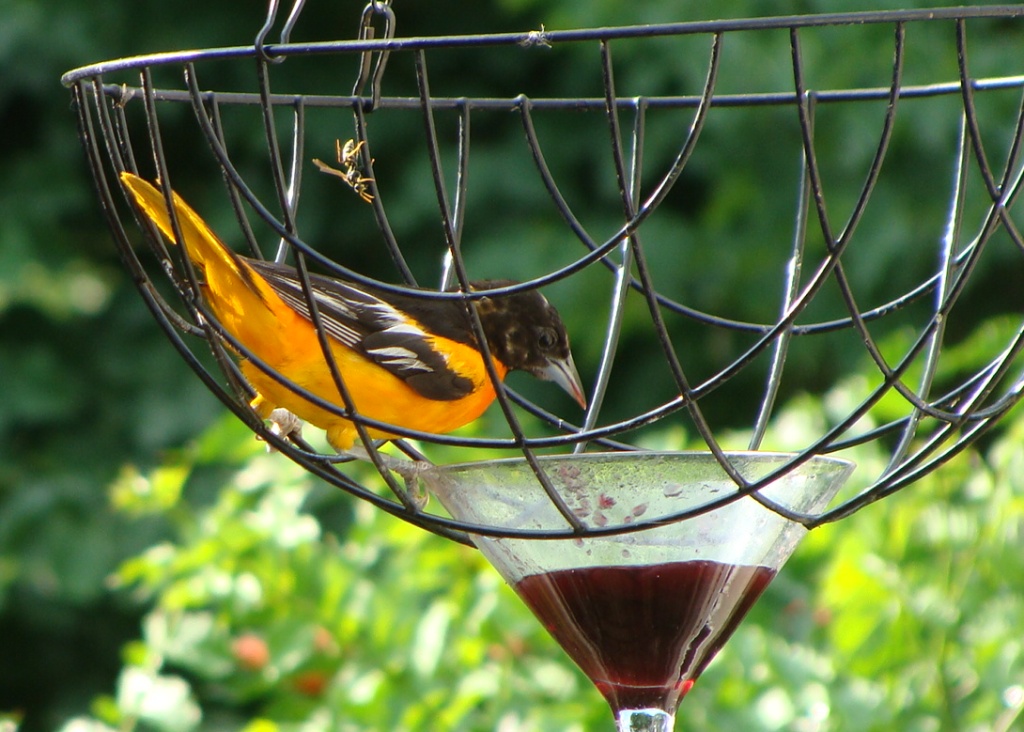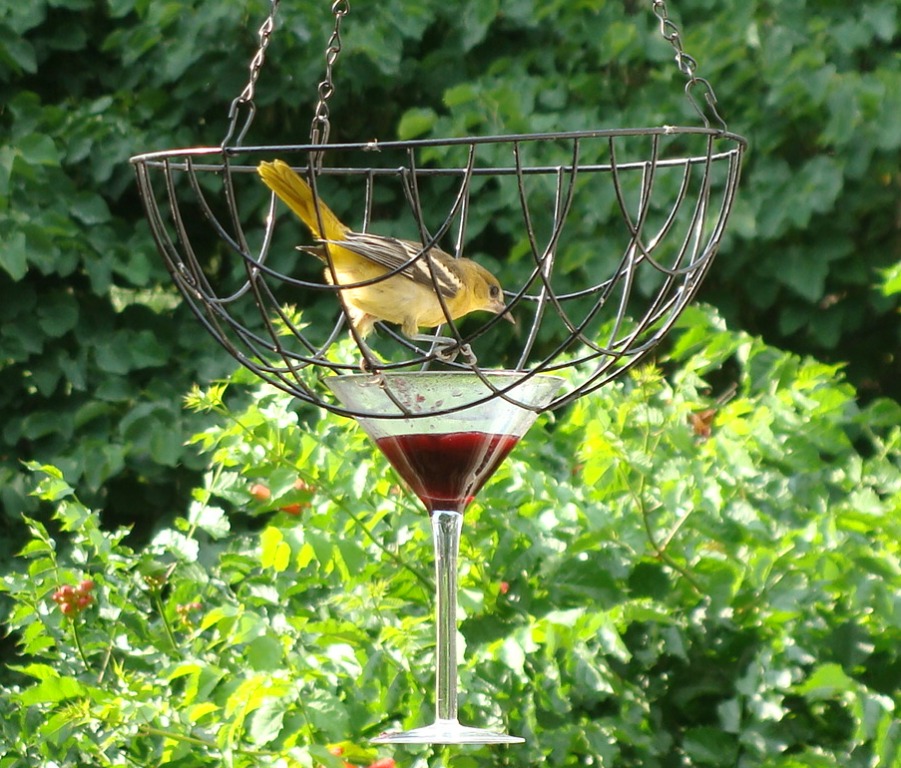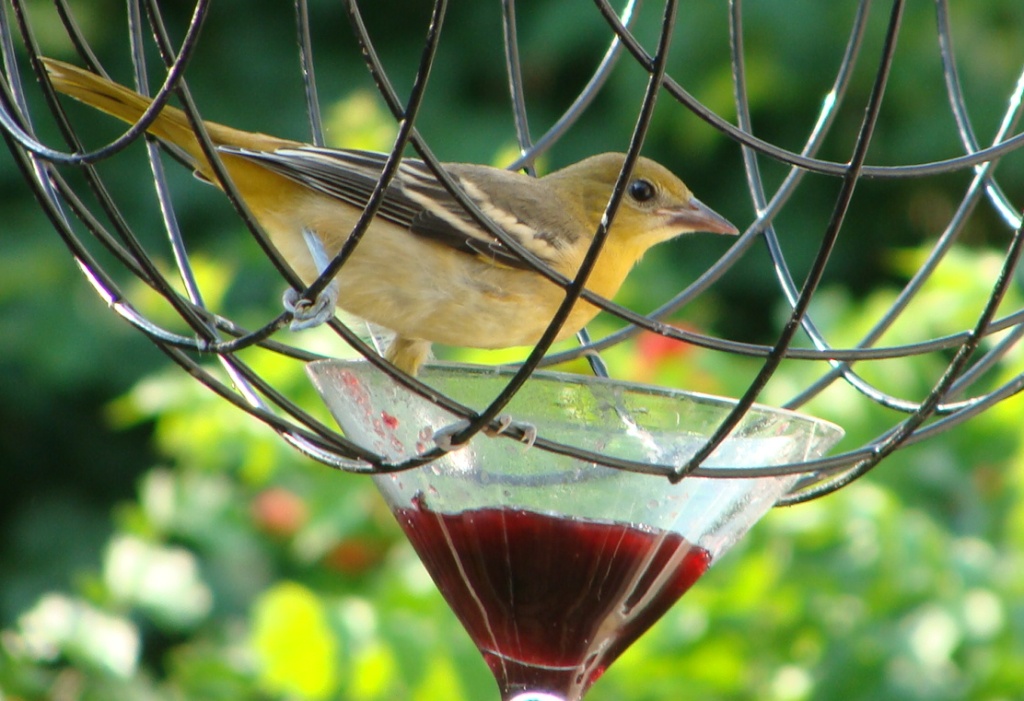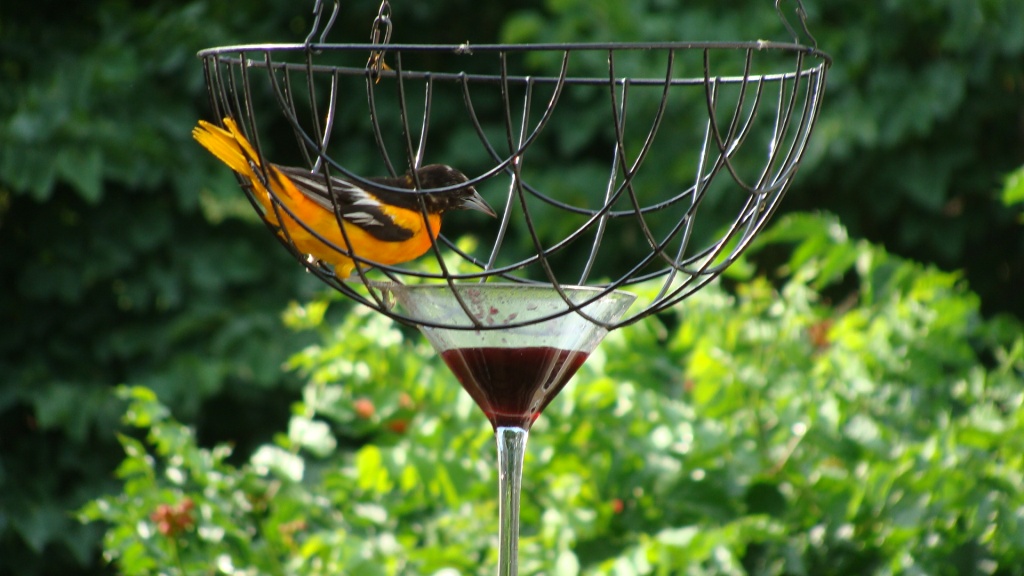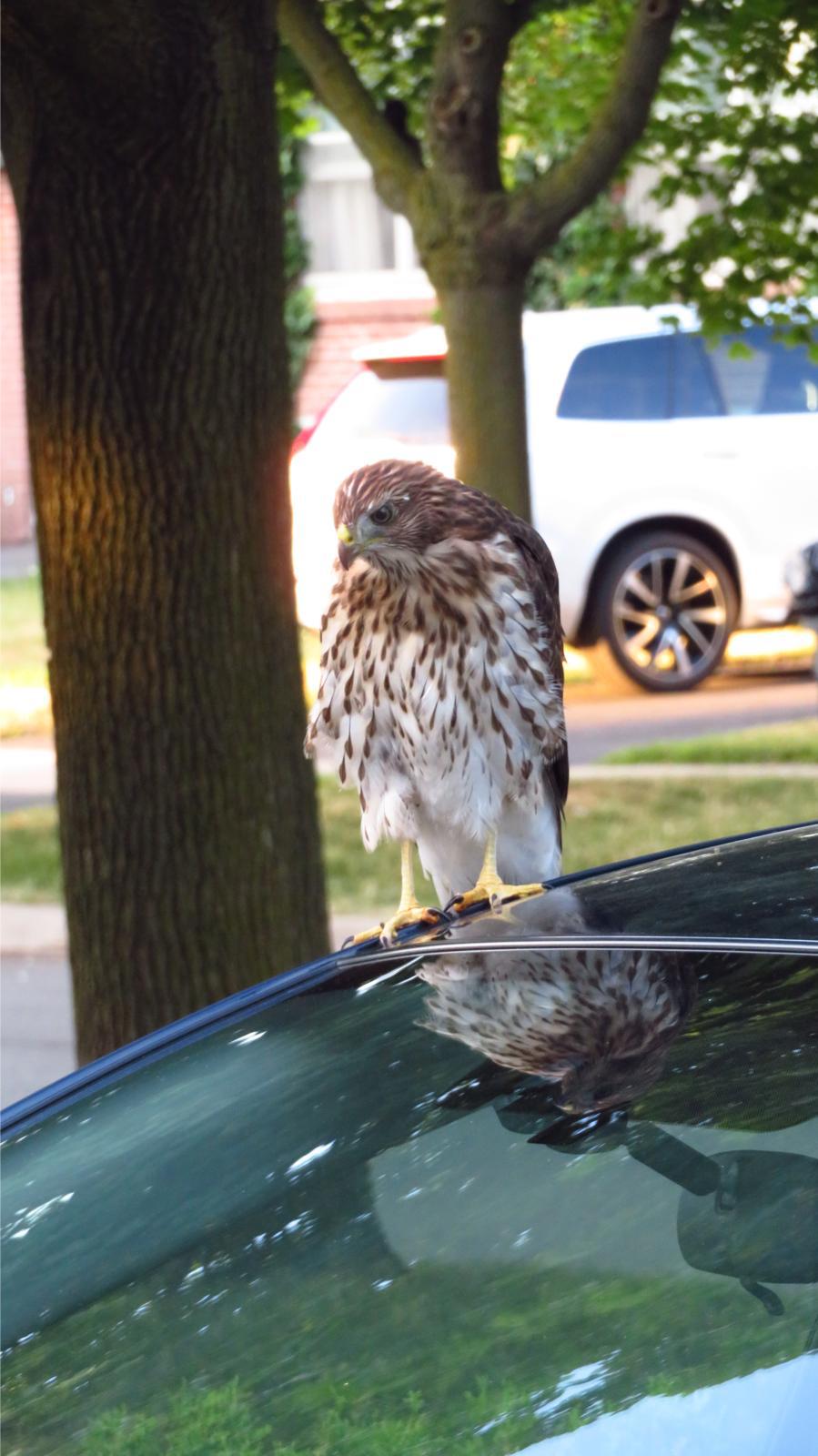PLEASE NOTE: THERE WILL BE NO BANDING THIS FALL AT RUTHVEN PARK
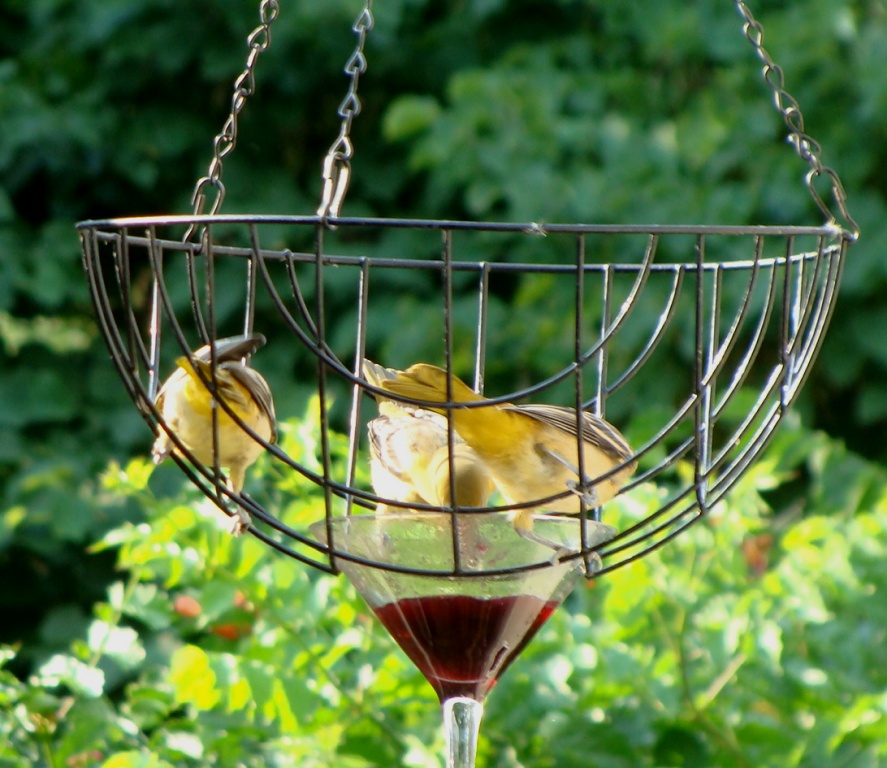
We’ve seen as many as 5 birds trying to access the same feeder. -DOL
One thing about this damned virus is that it’s given me a chance to catch up on my reading- all that stuff I had put into various piles (based on subject matter, fact vs fiction, etc.) meaning to work my way through it on a “rainy day”. Well those days are here, evidently, and I’m working my way through…. Now my reading spot of choice is a corner of our back deck where I can take in our 2 oriole feeders and our hummingbird feeder as well as a heavily-flowered trumpet vine that attracts both orioles and hummers.
For the past 2-3 weeks the oriole traffic has been….spectacular: as many as 10 can be seen at one time directly around the feeders. Then they fly off in one direction only to be replaced by a bunch coming in from another direction. I would love to know the absolute number that have used them during this time. Most appear to be young birds (some very young) but there’s a couple of adult males that mix in as well.
And, wow!, they sure are going through the jam – a bottle a day. I’m finding that their favourite is a President’s Choice Twice the Fruit Six-Fruit Flavour concoction that includes large numbers of cherries. The birds pick away at these and sometimes carry the larger ones off to a branch so they can tear them apart. Occasionally a cherry gets dropped but there’s a young Robin that likes to clean them up, swallowing them whole.
The young ones are doing a lot less begging now – most not all. They’re content just to bicker and vie for a spot (sometimes completely ignoring an empty feeder right beside them – it seems they’d rather fight). But this isn’t going to last too much longer. One night…soon…the sun will go down and about half an hour later this group of orioles will take off heading south. The next morning will likely find them a couple of hundred kilometers south of us, some on their way to Belize where I encountered them this past January.
In the meantime some folks have been getting out and about. Eila and her dad (Darren) did a back country kayak trip in the Kawarthas (no pictures!); Maggie and her family were at a cottage “up north” (nice pictures but too small to post); and Karen took her family on their annual pilgrimage to Algonquin Park. Here are some of her pictures:
Birds:
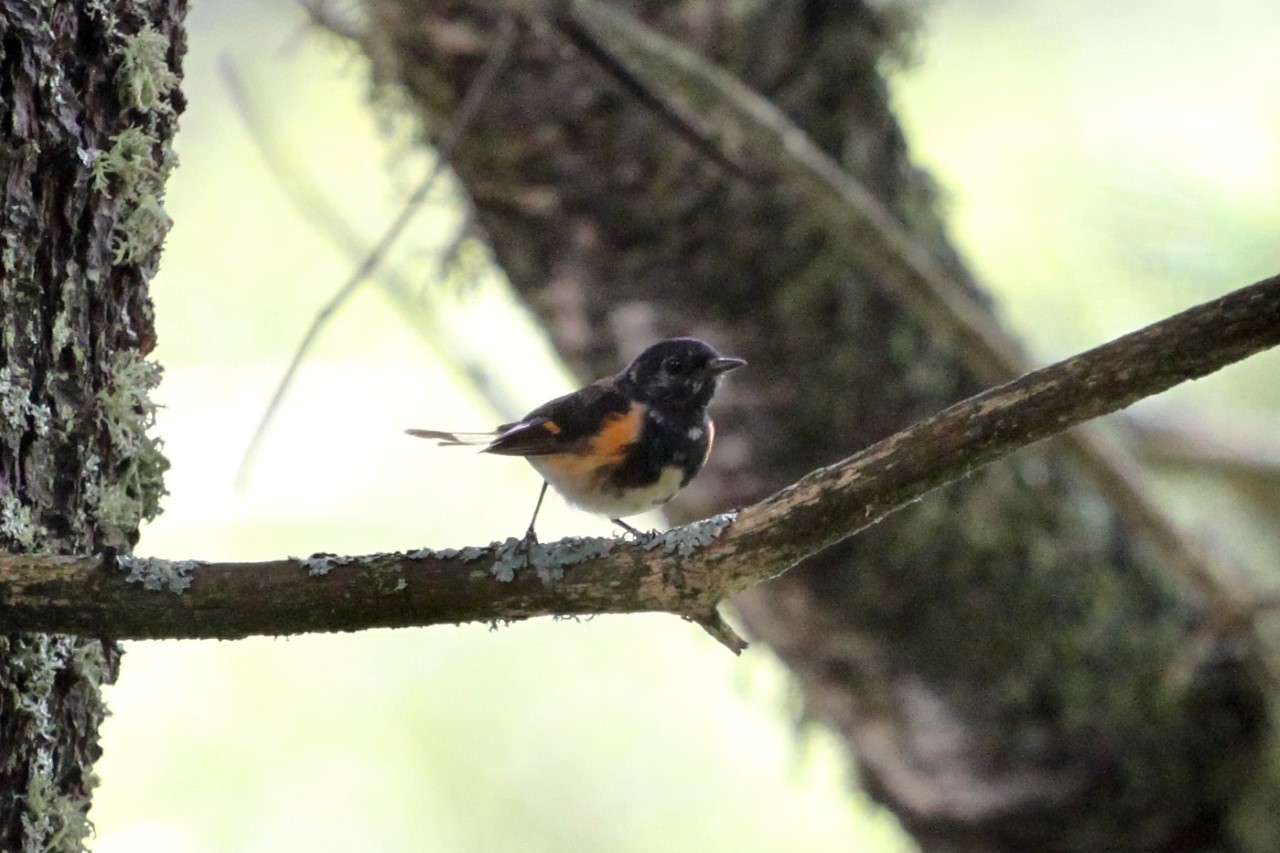
2nd year male American Redstart just moulting into its full adult plumage. -KP
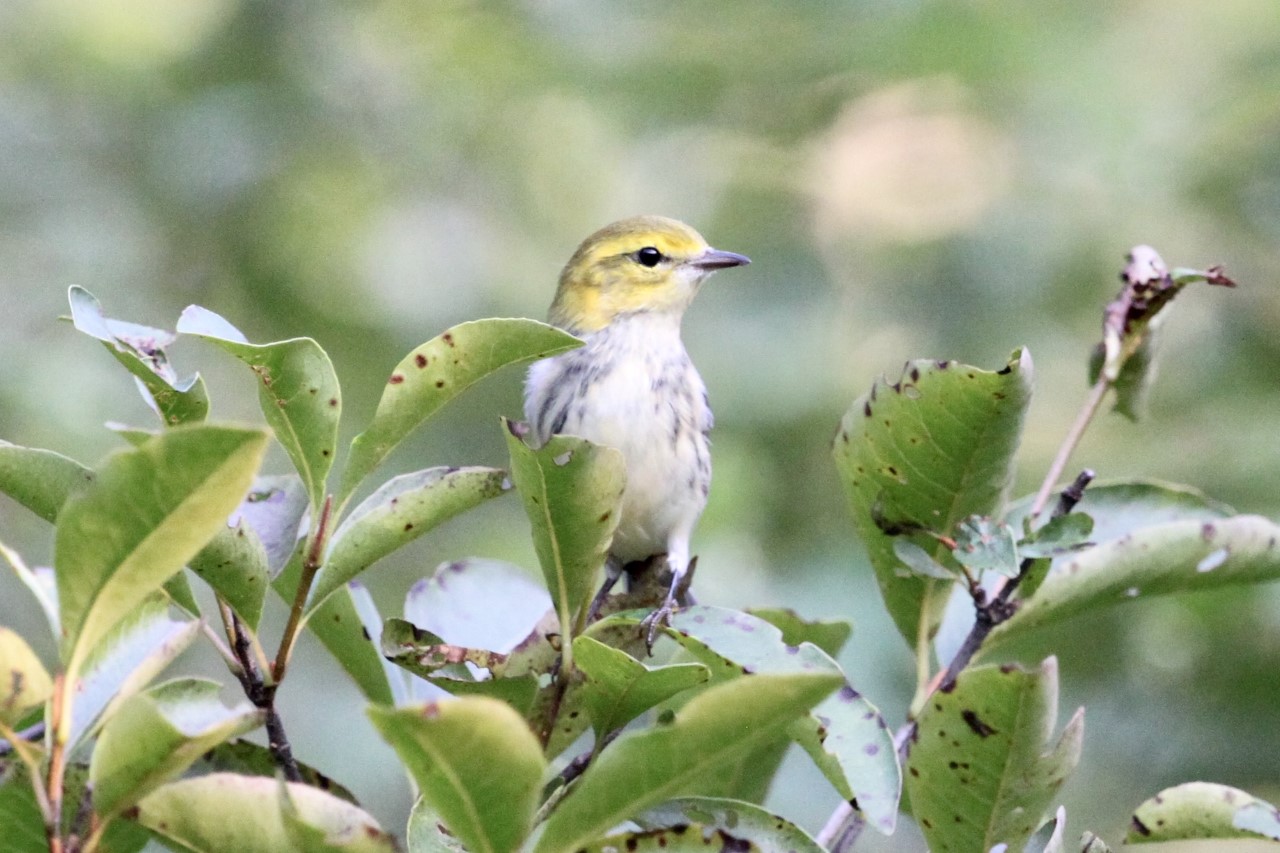
A “confusing fall warbler” – Black-throated Green Warbler. -KP
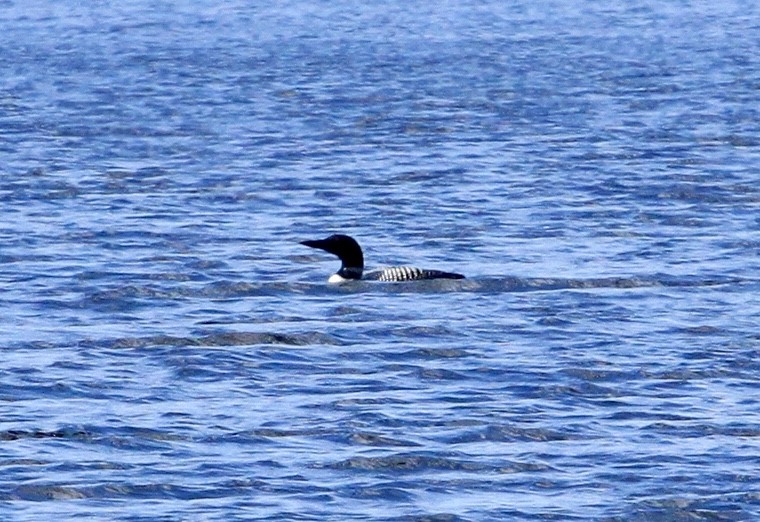
Adult Common Loon. -KP
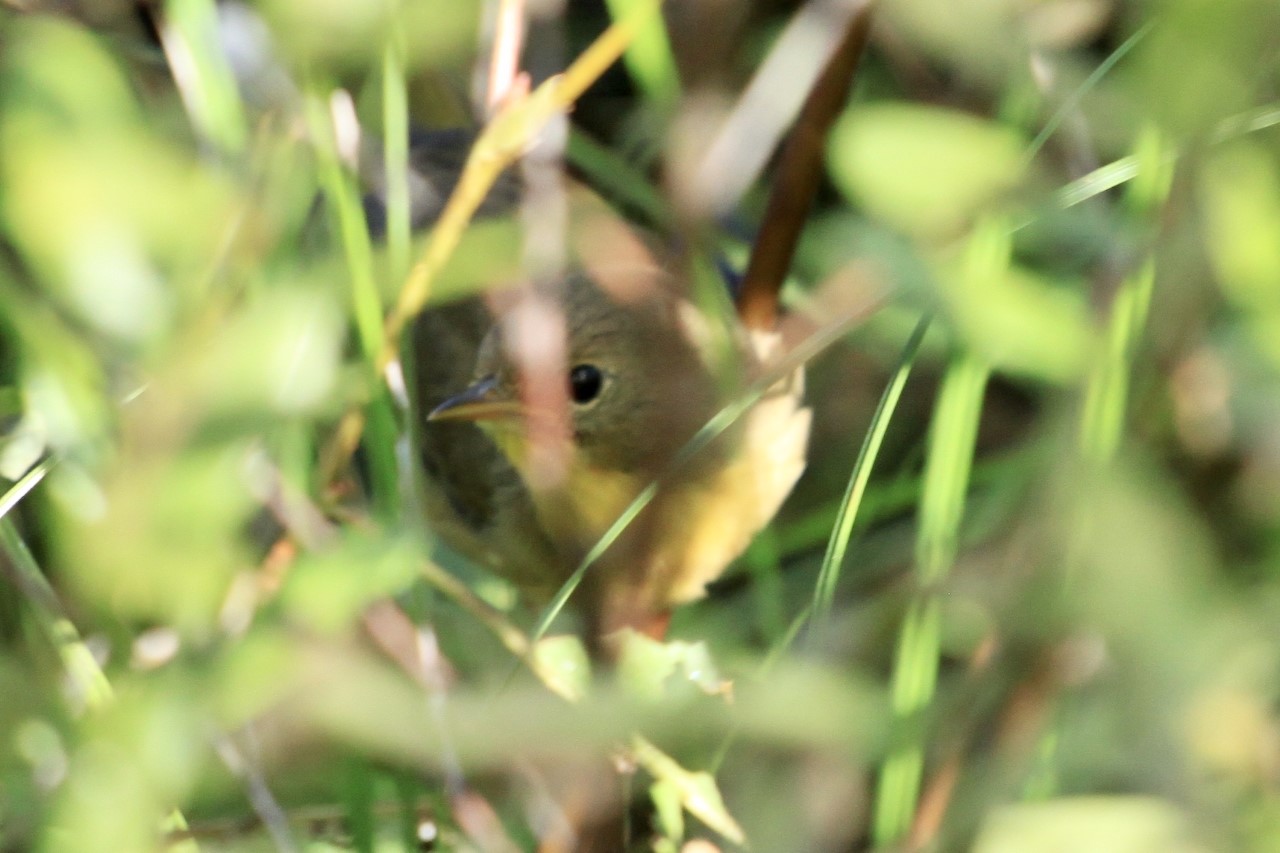
Well-hidden Common Yellowthroat. -KP
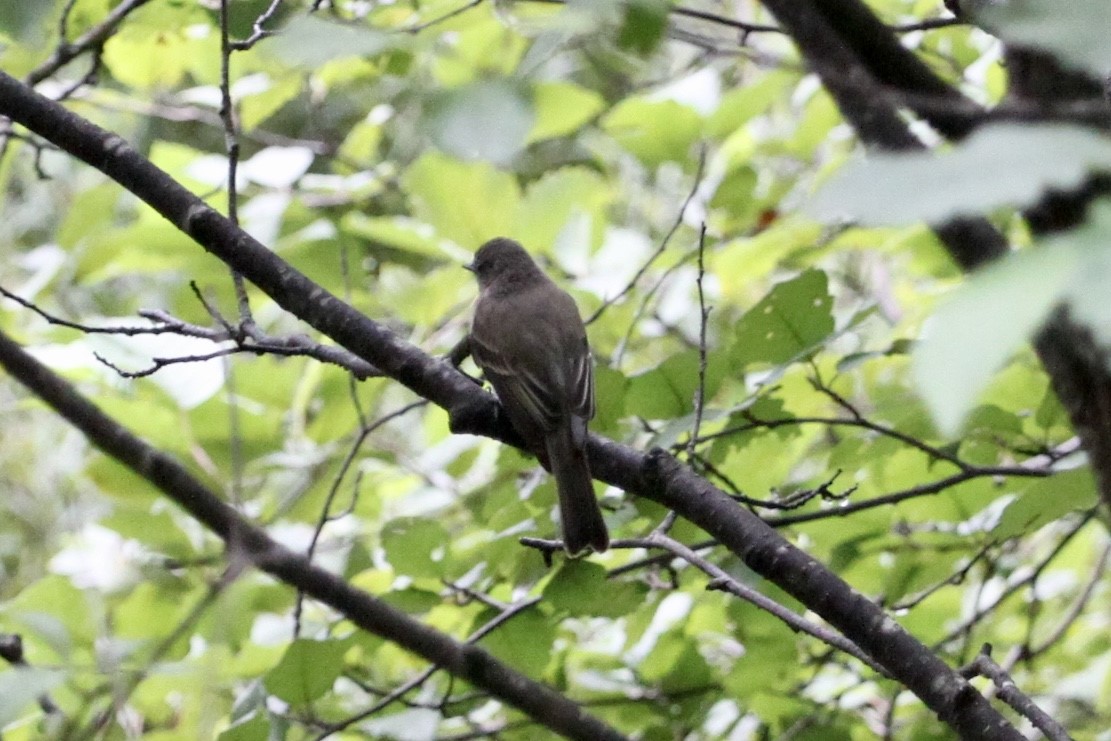
Eastern Wood-pewee. -KP
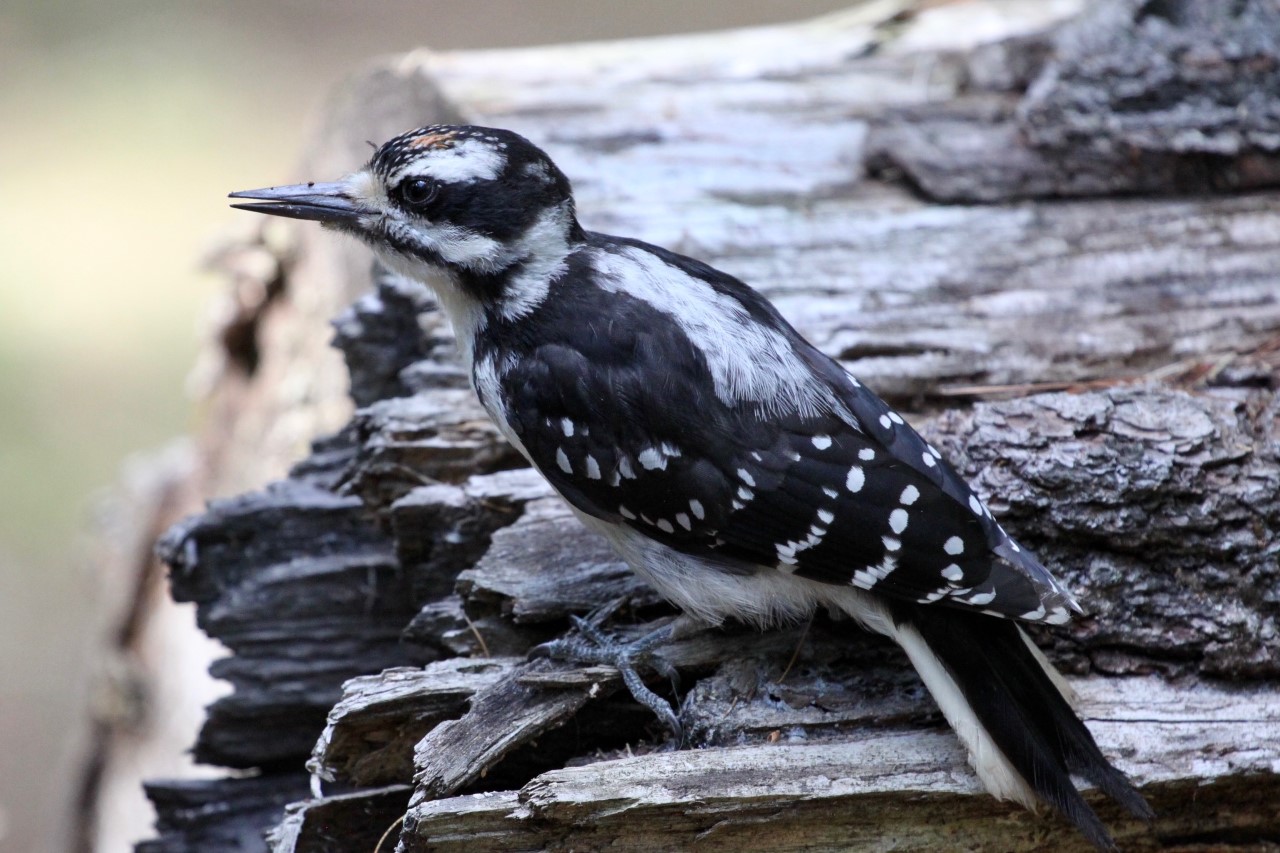
Hairy Woodpecker. Note the very limited suffusion of red on its head indicating it’s a young (HY) bird. -KP

Another “confusing Fall warbler”: Magnolia Warbler. -KP
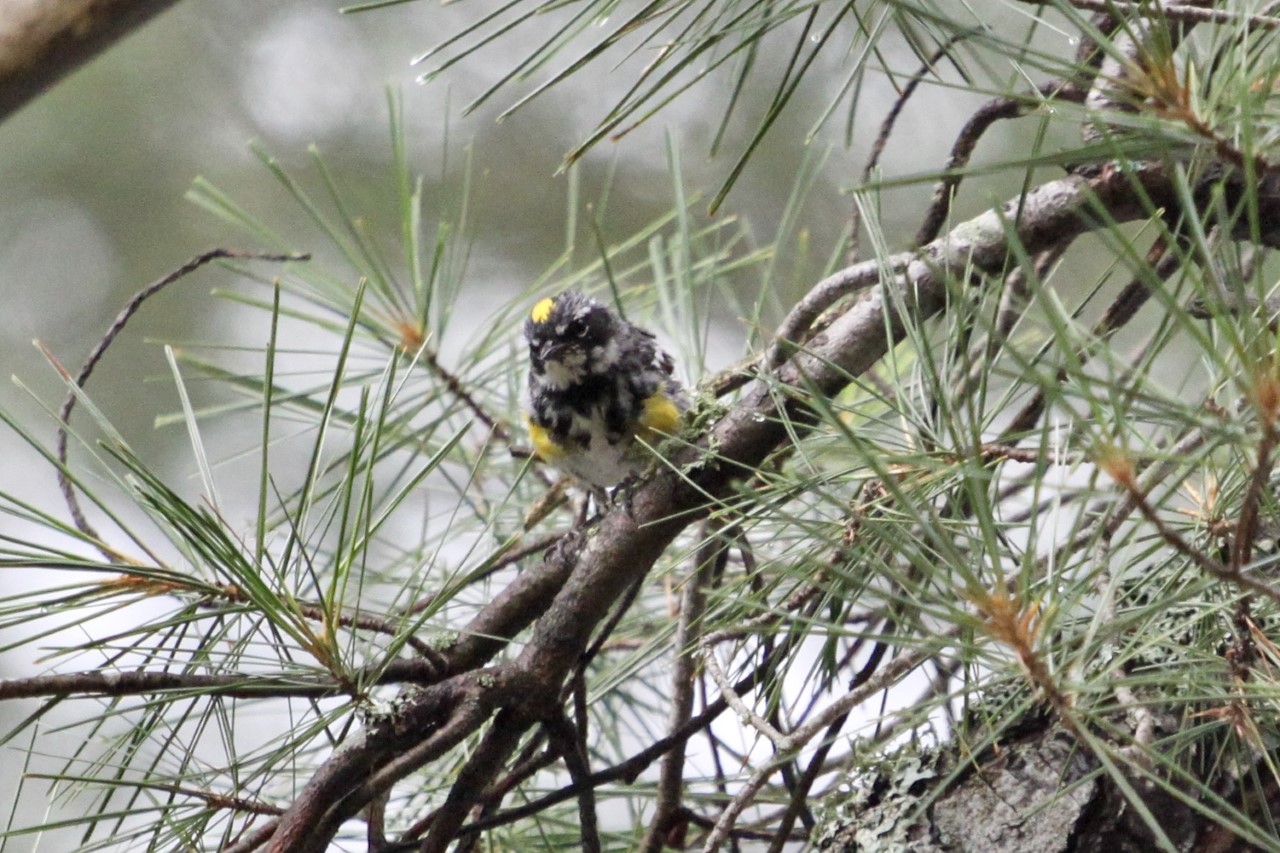
Male Myrtle Warbler. -KP
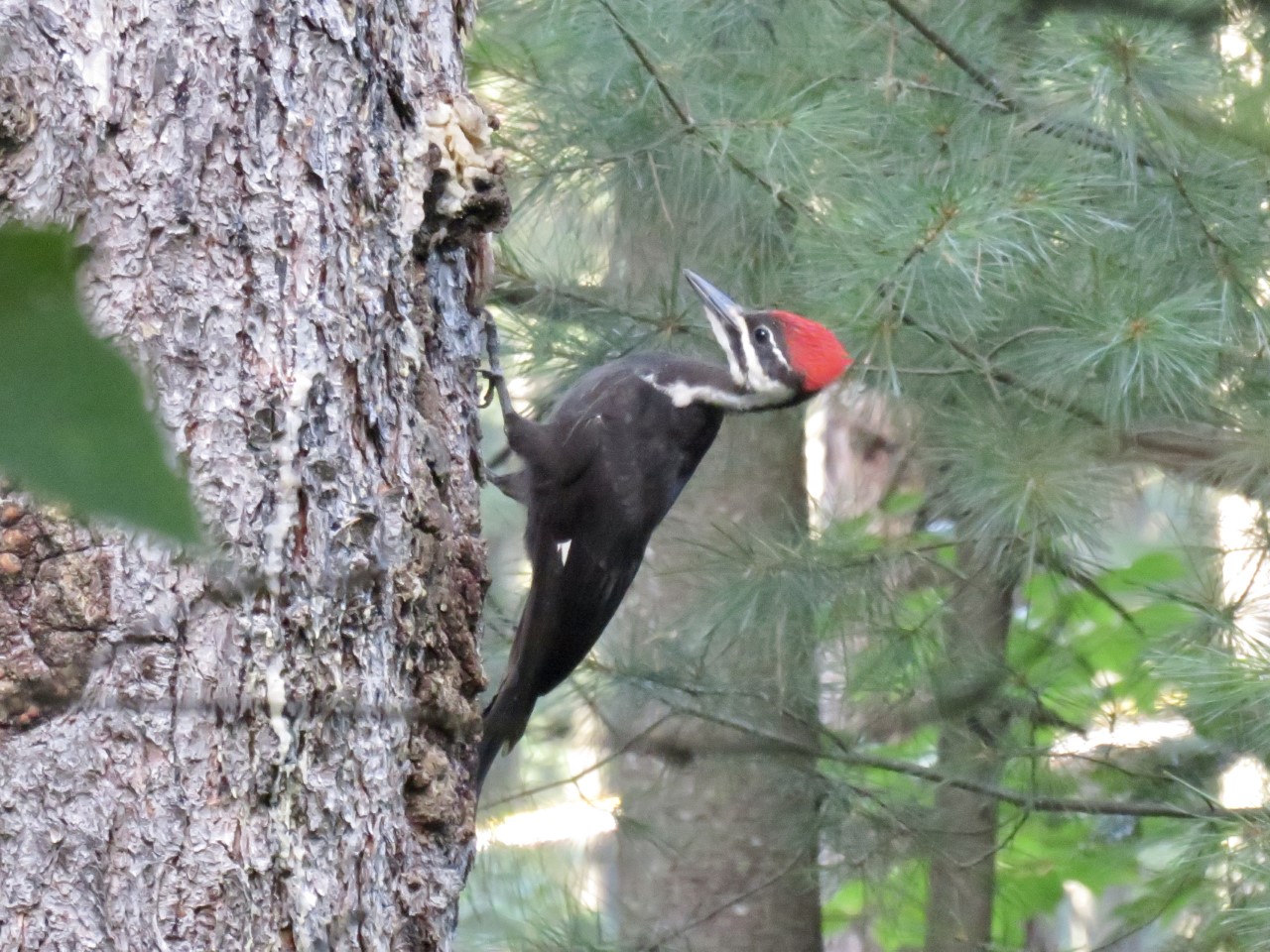
Pileated Woodpecker. -KP
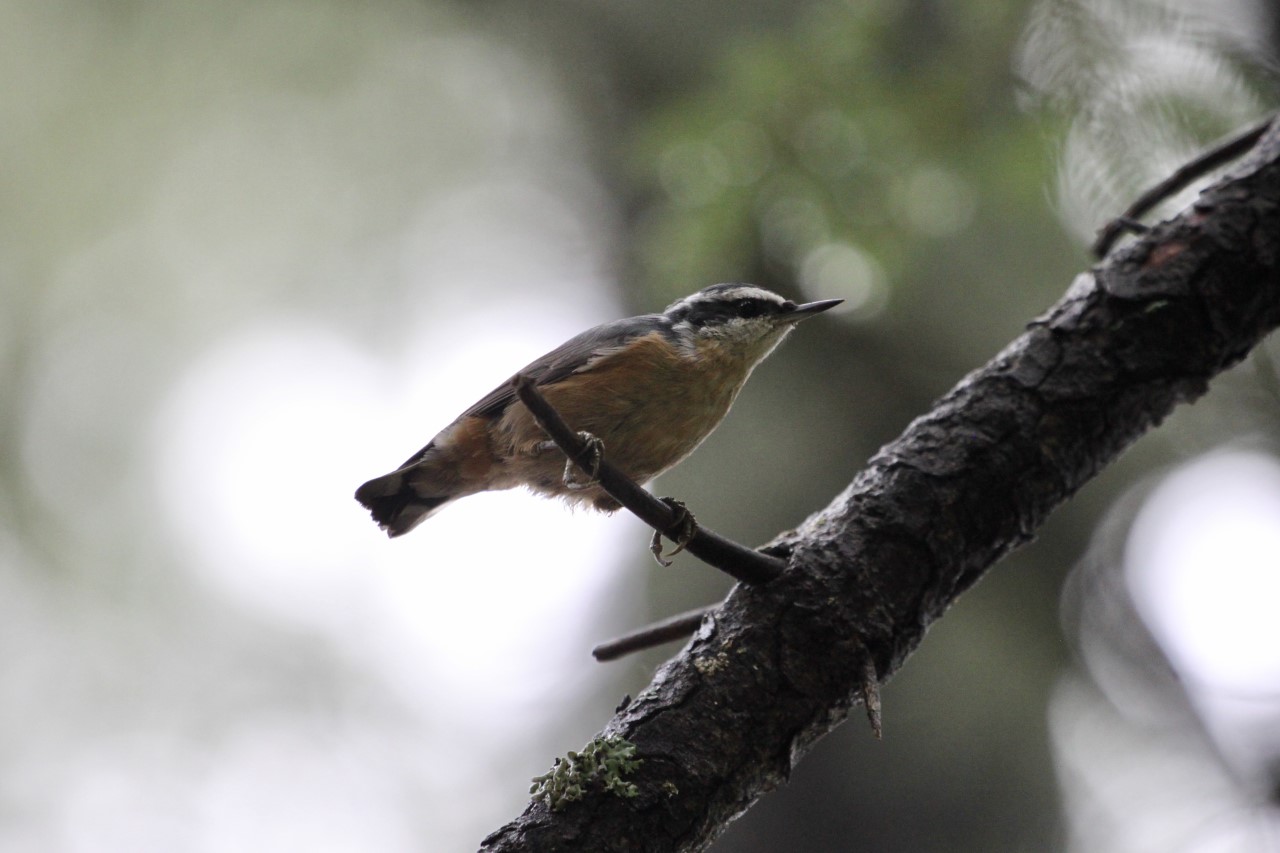
Red-breasted Nuthatch. -KP

White-throated Sparrow – look for these guys in large numbers starting in October. -KP
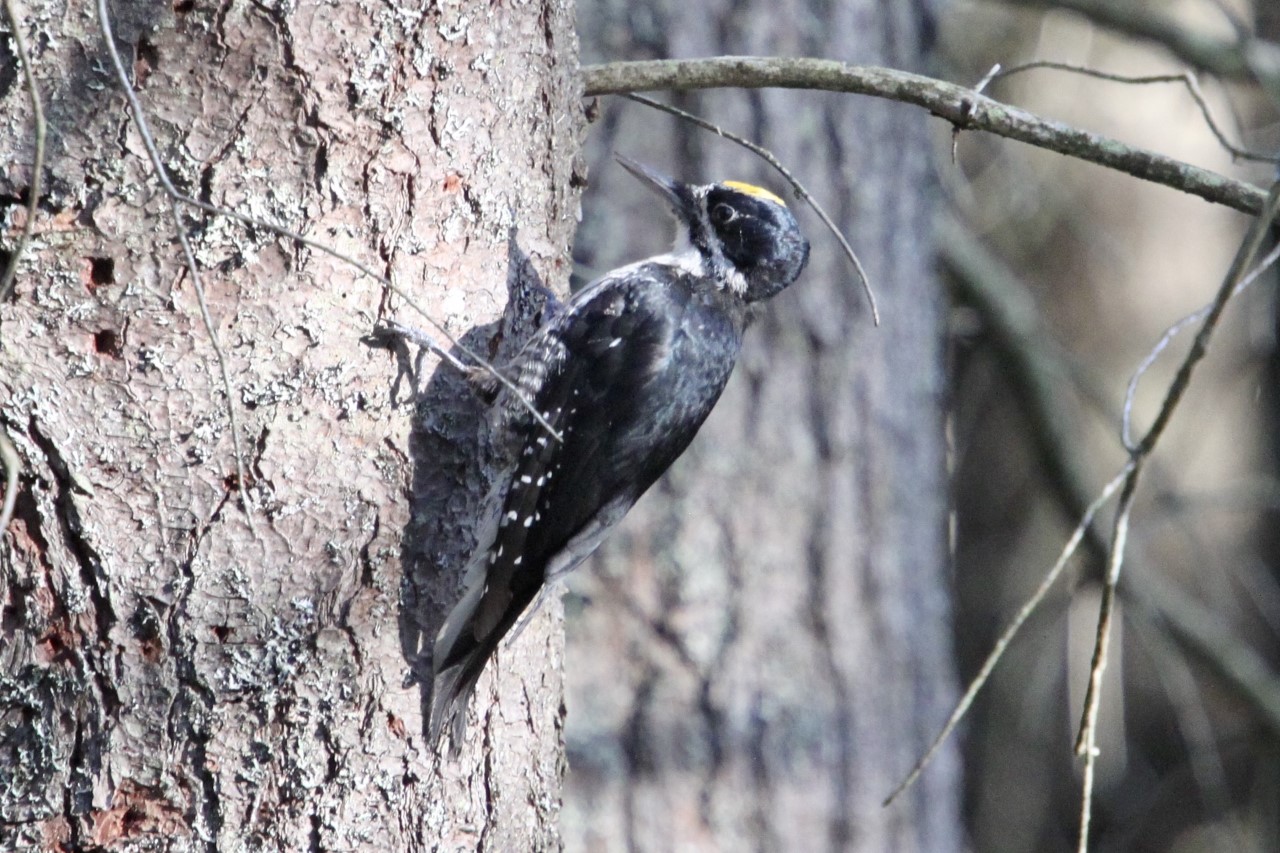
Black-backed Woodpecker. -KP
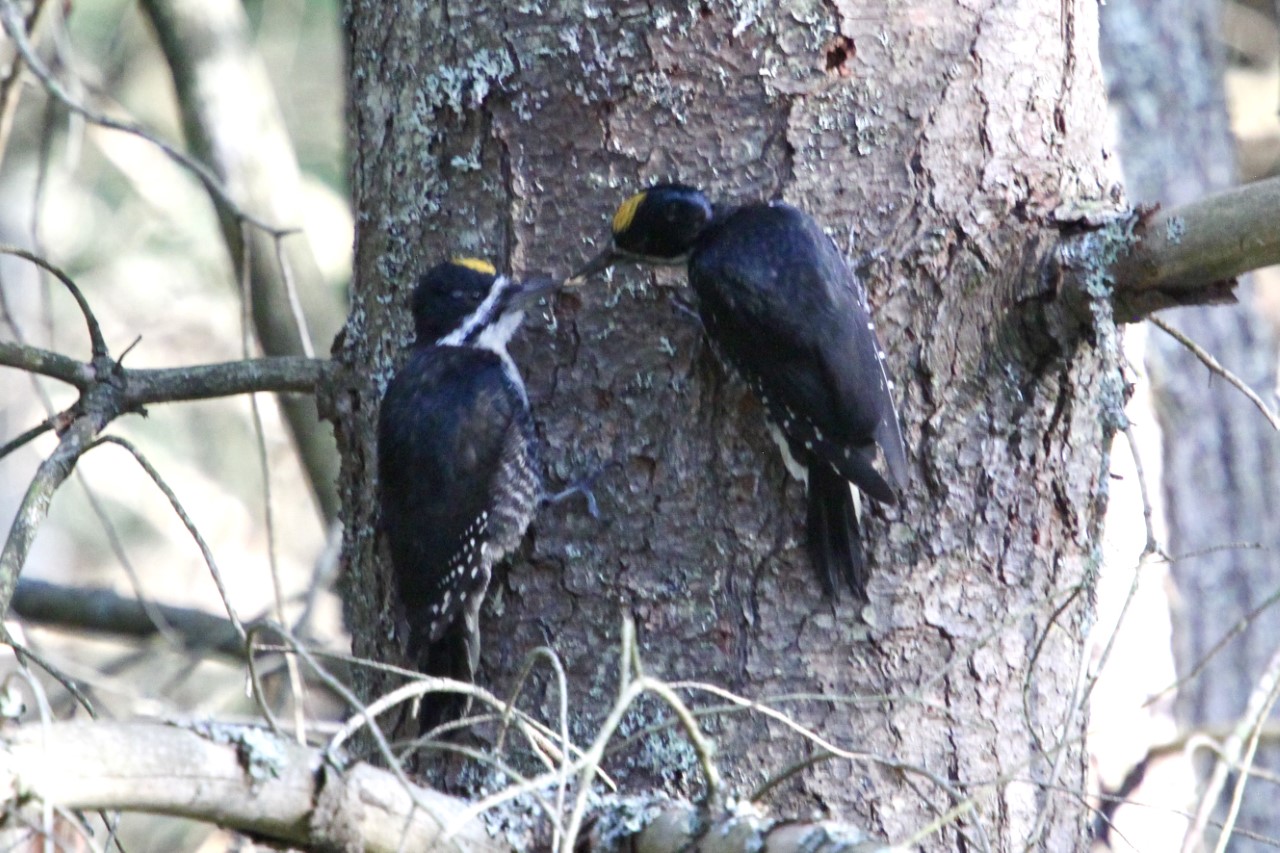
Two Black-backed Woodpeckers. -KP
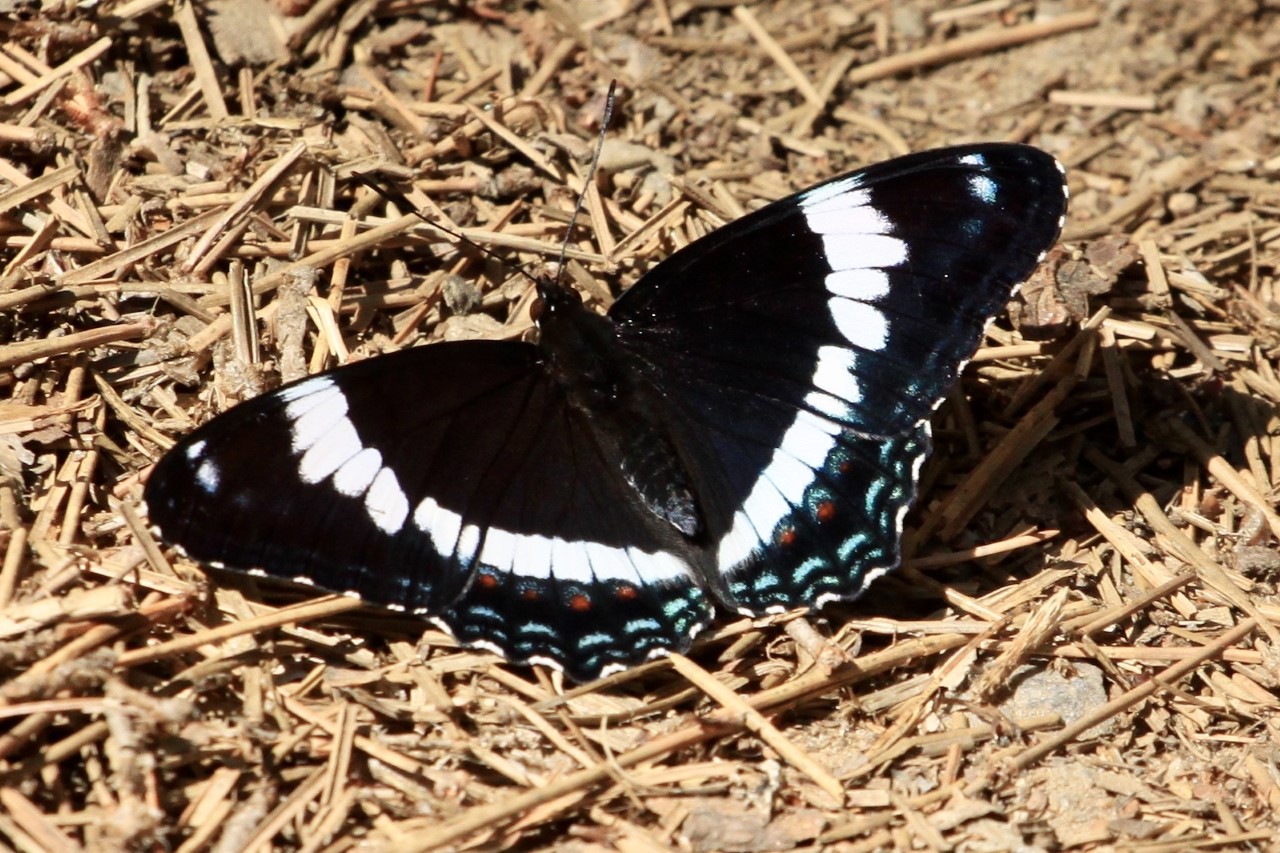
White Admiral. -KP
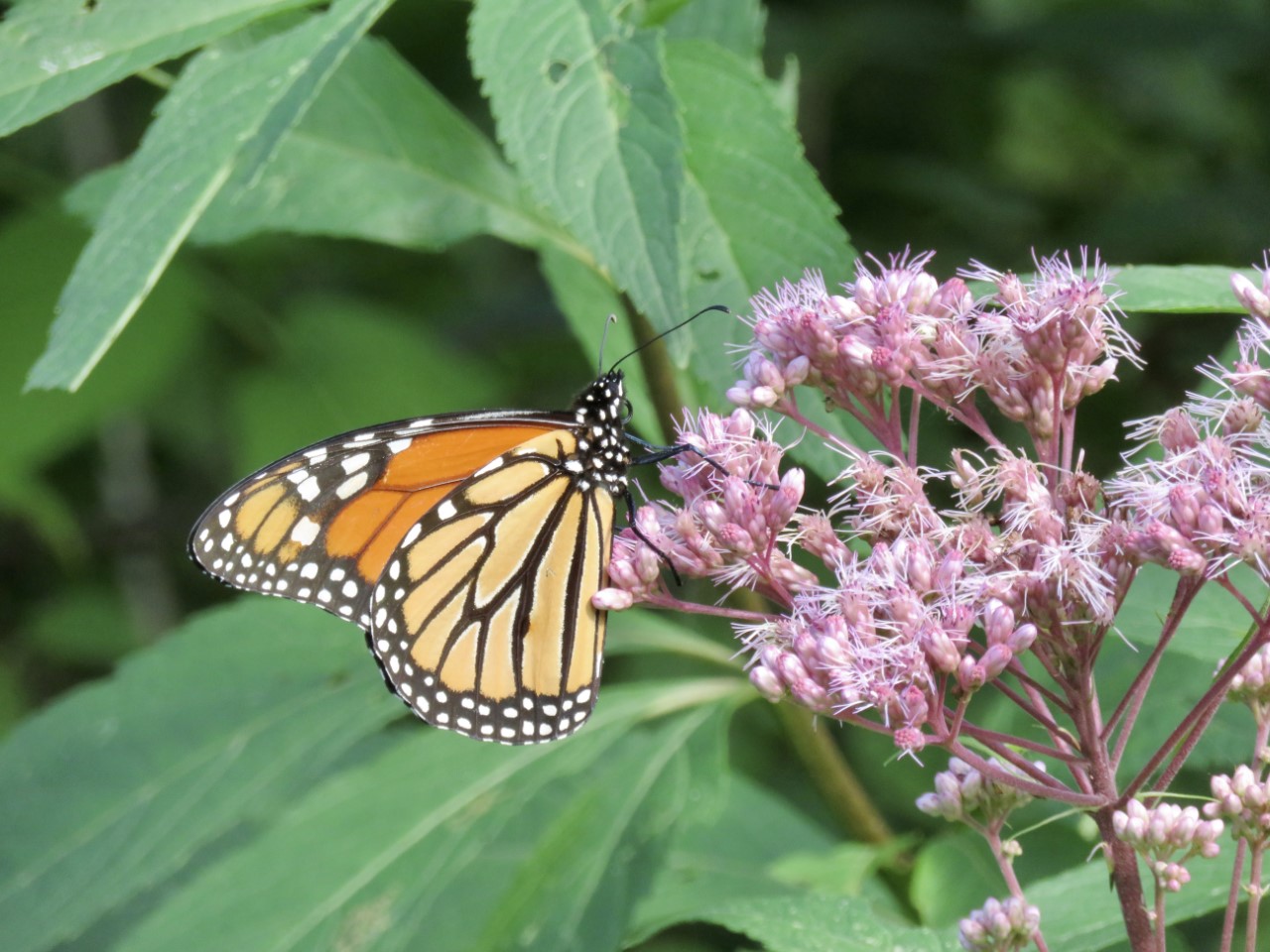
Monarch Butterfly. -KP
There is a large patch of milkweed over by the campground office at Mew Lake, and that’s where I’ve collected caterpillars and milkweed leaves for them to eat in the last few years while I’m here. Last year I probably found ten or so, and raised them in the relative safety of my mesh habitat for release. This year- one. I’m not sure what to make of that. I have seen maybe three adult monarchs flying around in different places so far which I think is fewer than usual. Lots of food available for them… just no monarchs. There is an old airfield over there too, usually dense with scrub blueberry- the little bushes are about half as high as usual, and not a berry to be seen. Maybe some unusual spring weather caused the berry drought. Makes you wonder which of these things are related- but really they all are, one way or another, aren’t they?
Tonight we will trek to the beach to enjoy the annual Perseid meteor shower, one of the wonders of the park at this time of year. The light pollution even in our relatively rural area is still significant when you compare it to the utter blackness here. Tonight, at the peak of the event, you can see 50-100 meteors per hour! It’s really something to see.
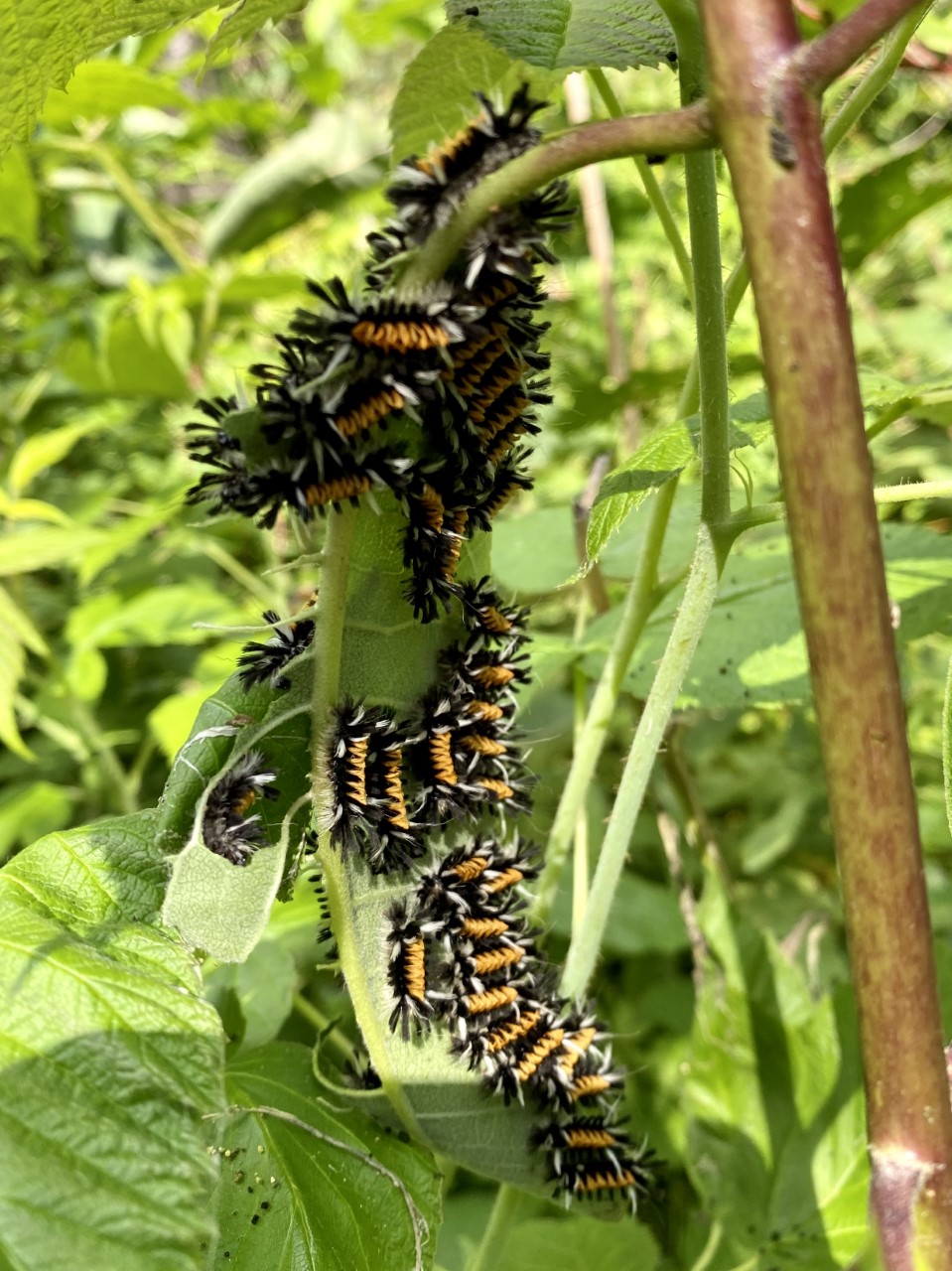
Milkweed Tussock Moth. -KP
Chowing down! I notice that when I find these guys, monarchs can be scarce… I only found one caterpillar in the large patch of milkweed I looked through today. I’m not sure if that’s an actual thing or not, though, just an observation.
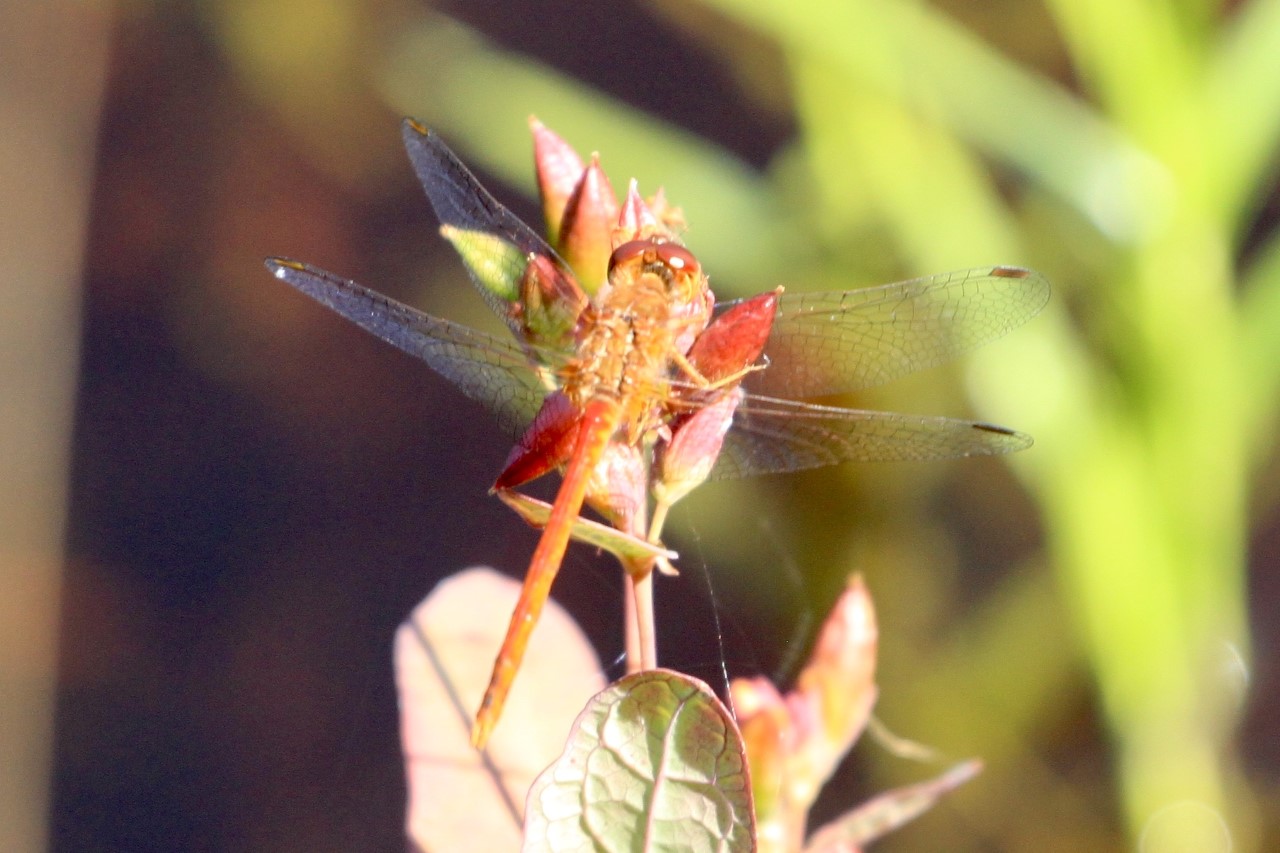
Autumn Meadowhawk. -KP
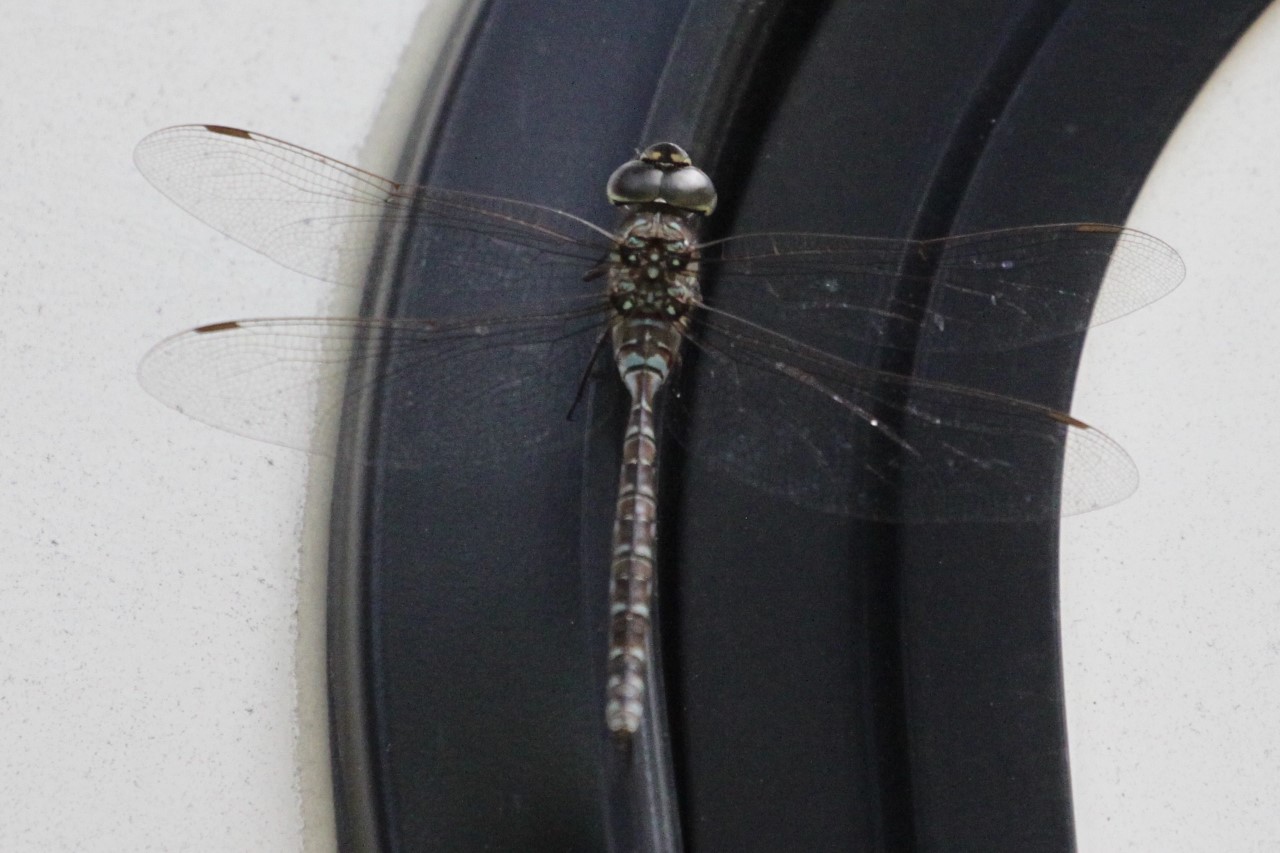
Female Canada Darner. -KP
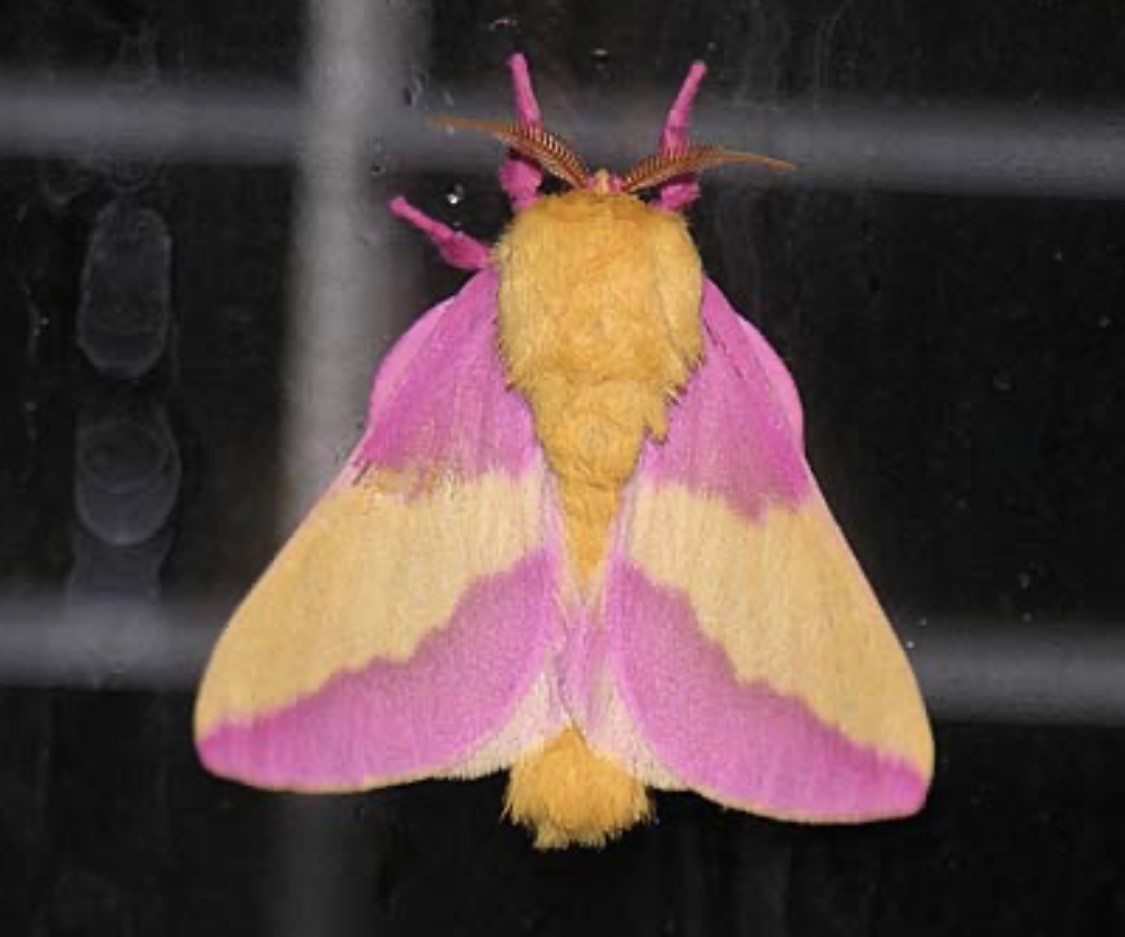
Rosy Maple Moth. -KP
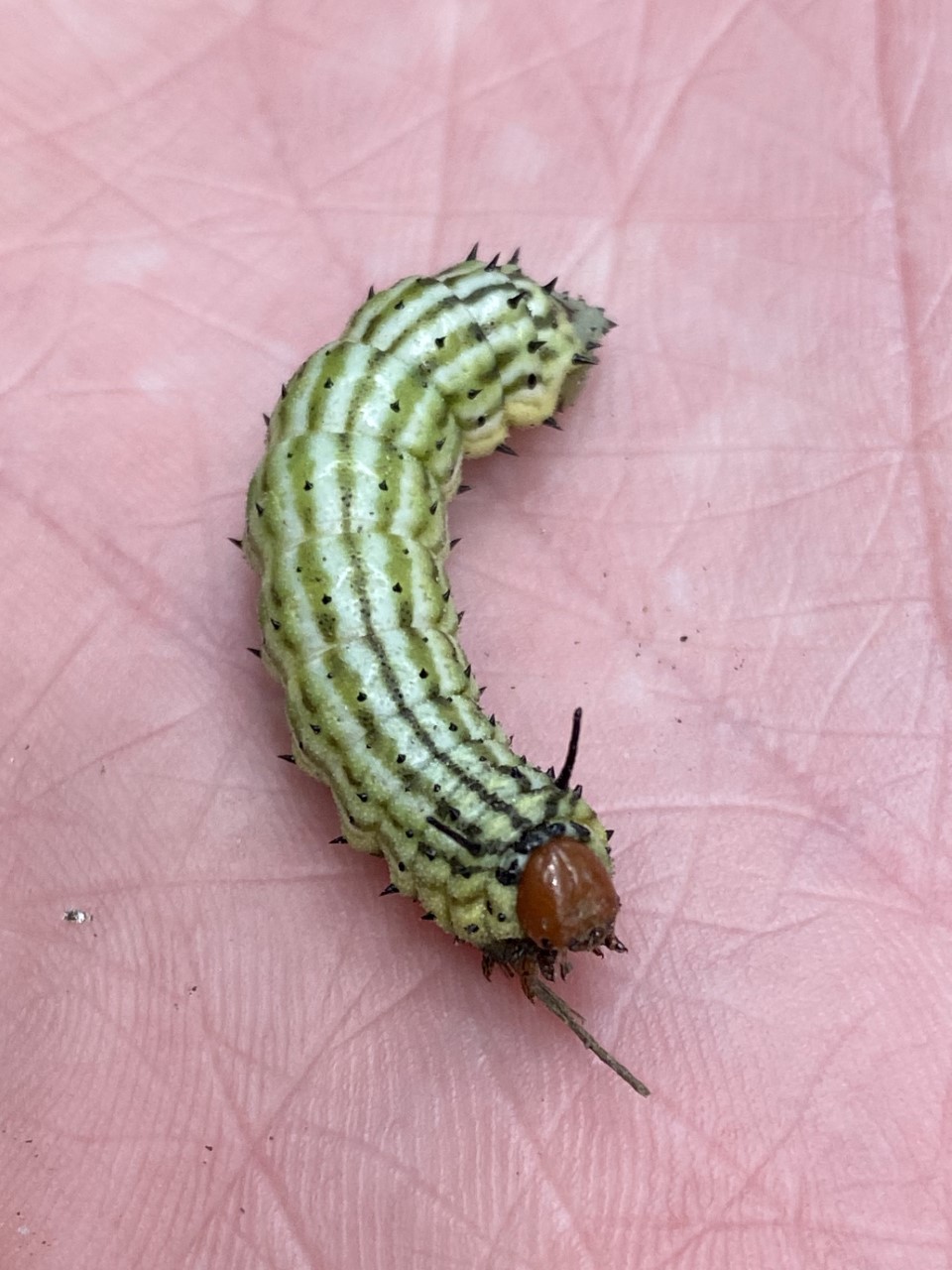
Rosy Maple Moth caterpillar. -KP
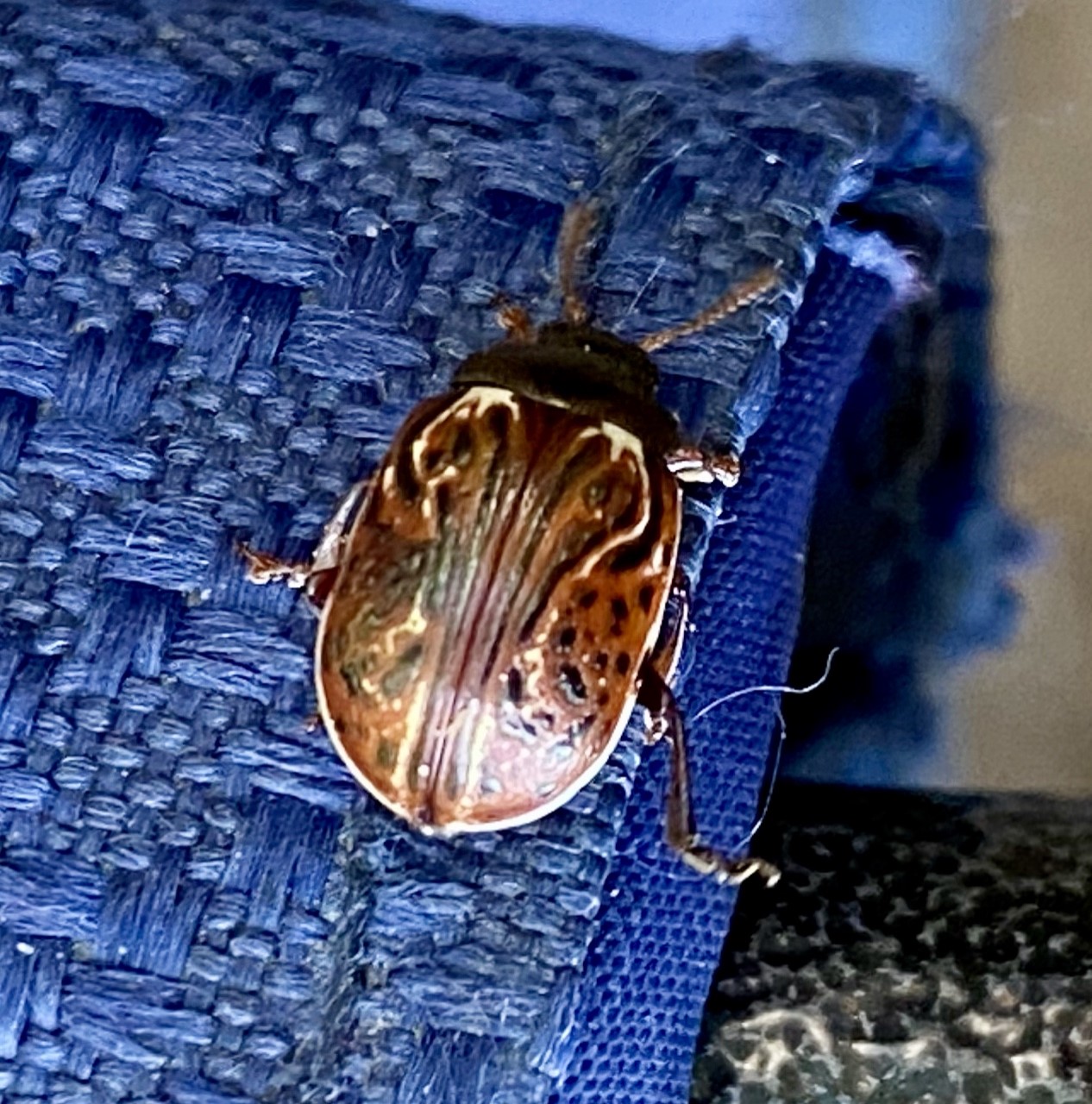
Russet Alder Leaf Beetle. -KP
So…. this guy is in a family called ‘calligrapher’ beetles, because of the fancy markings on the shell. This particular variety only has 12 other iNaturalist sightings in Ontario, and this was only the 4th one in Algonquin Park. So that’s kind of fun!
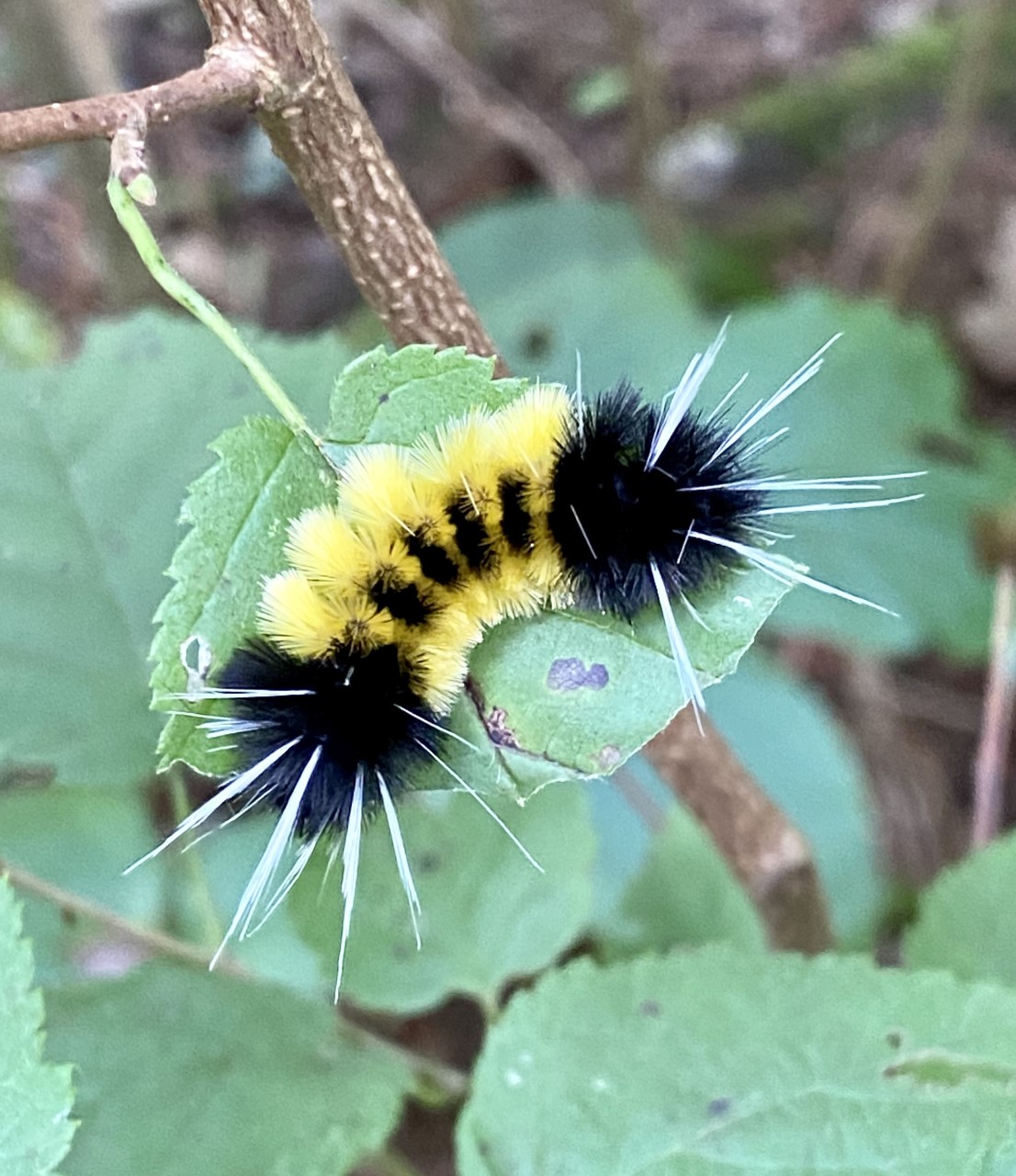
Spotted Tussock Moth. -KP
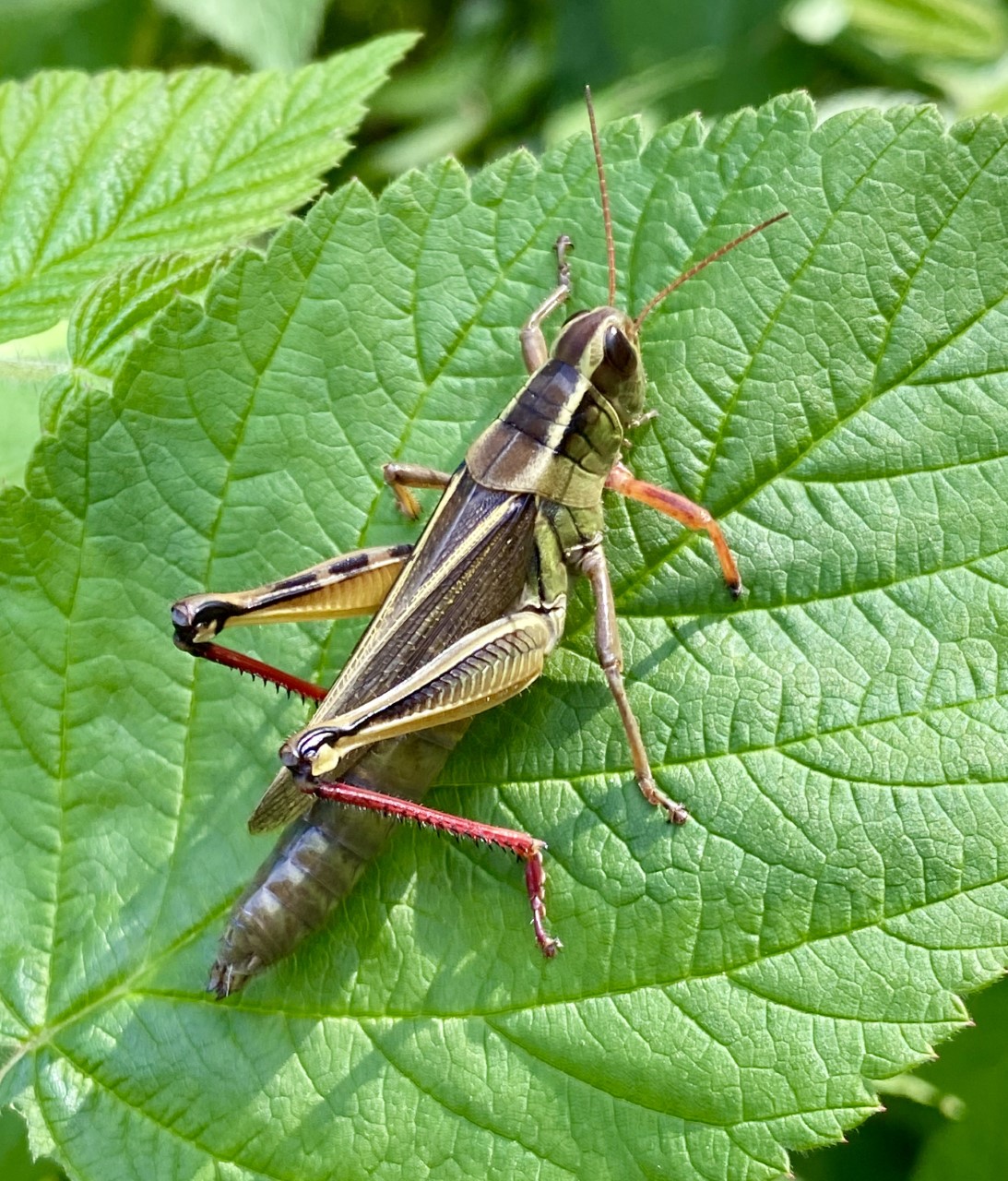
Two-striped Grasshopper. -KP
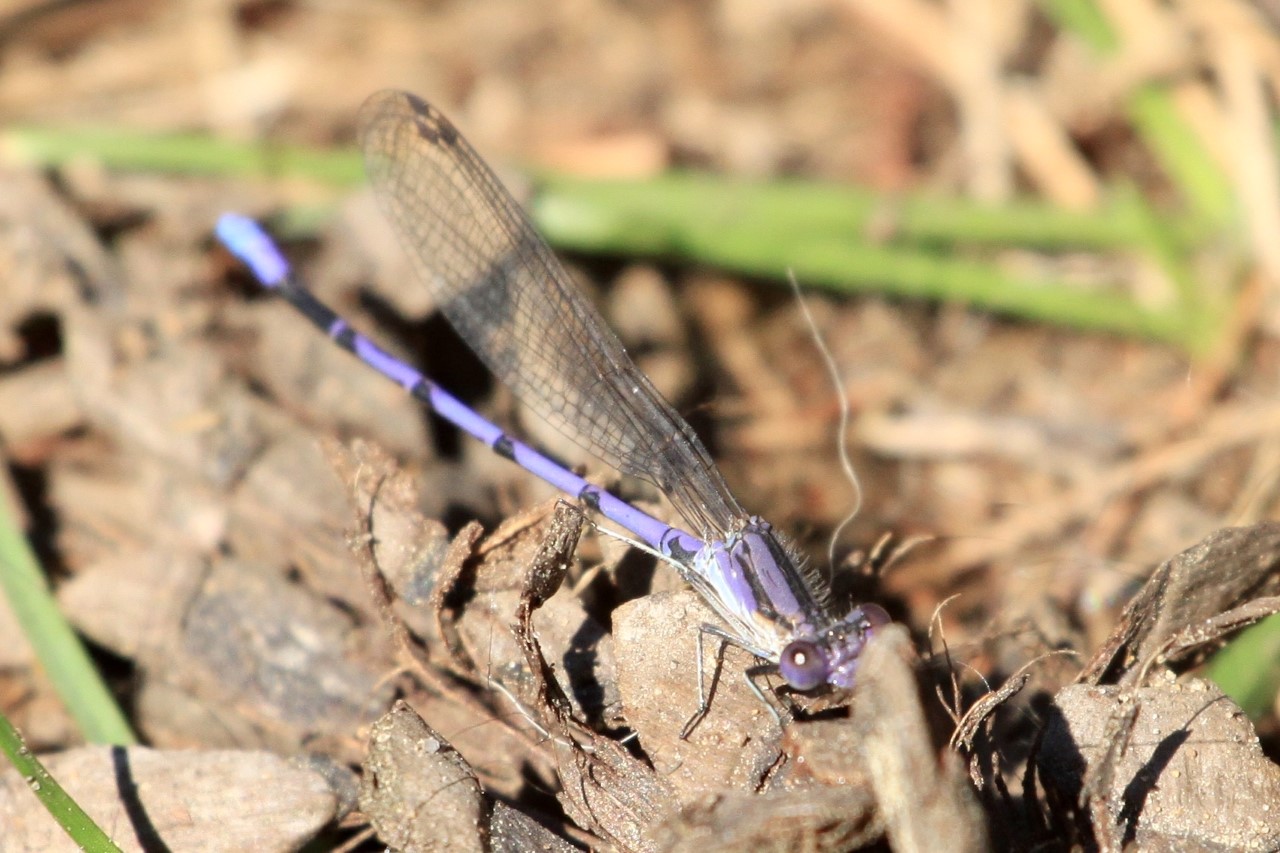
Variable Dancer. -KP
Rick
Like this:
Like Loading...
